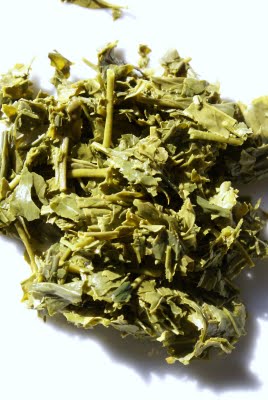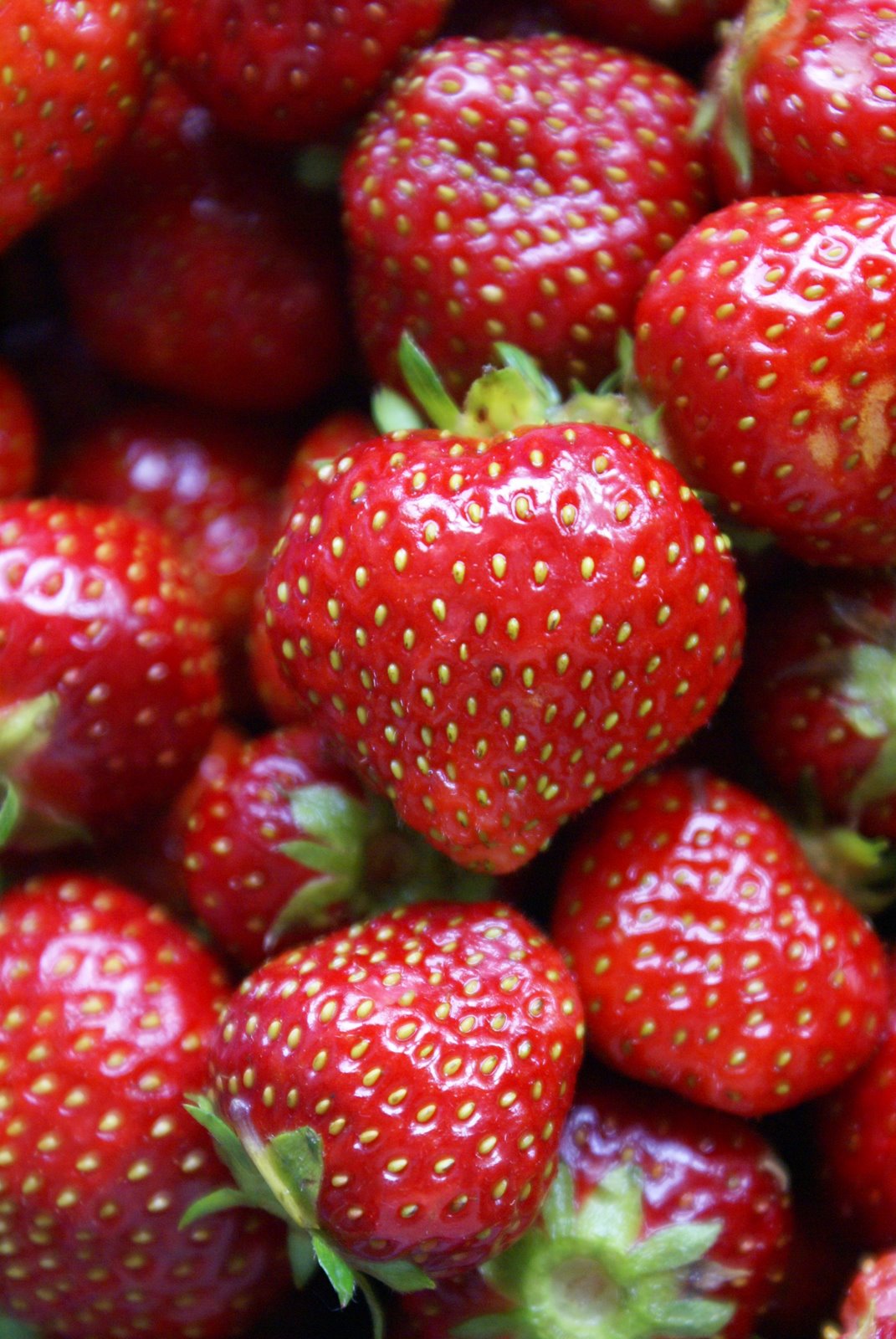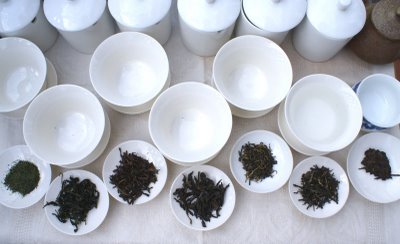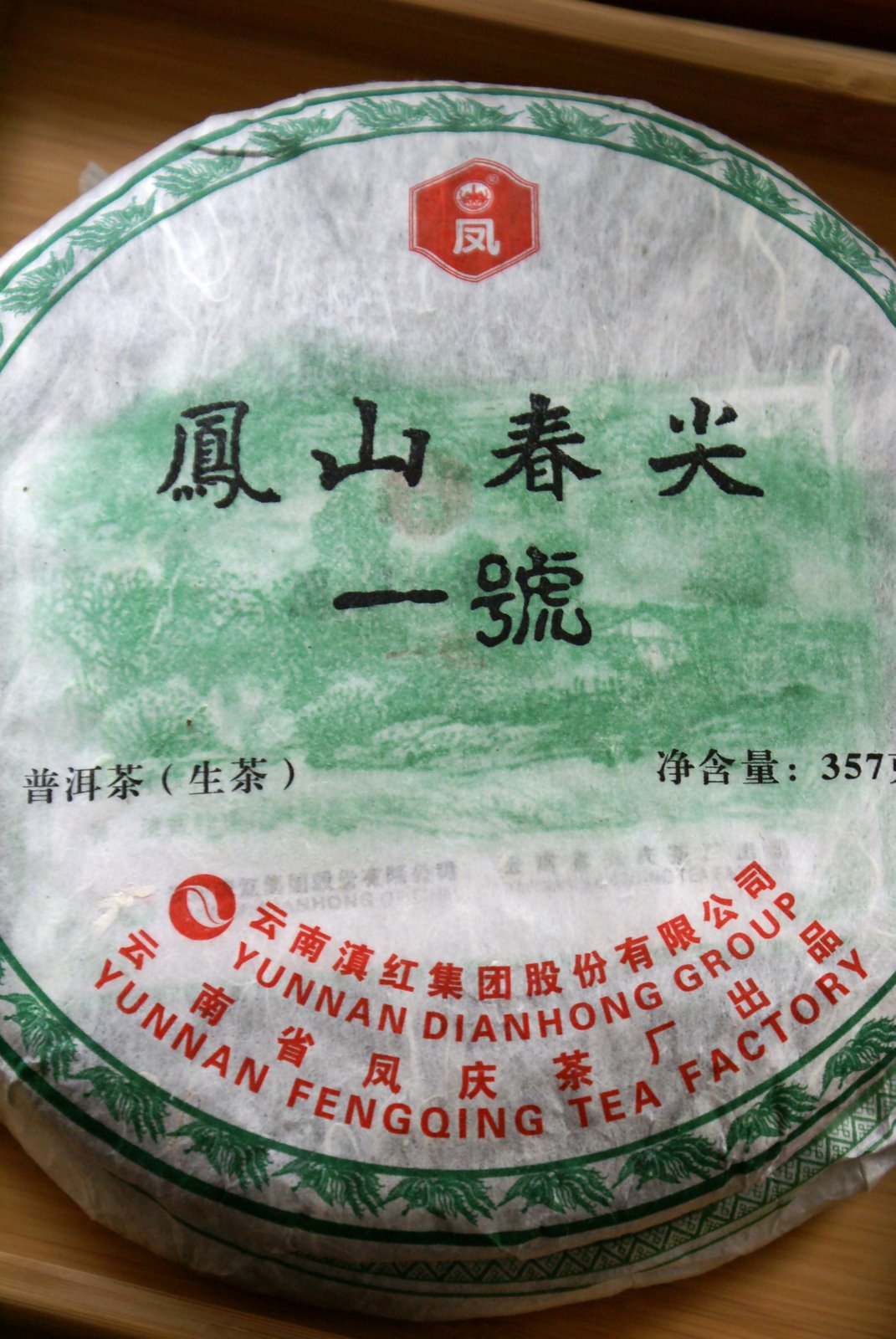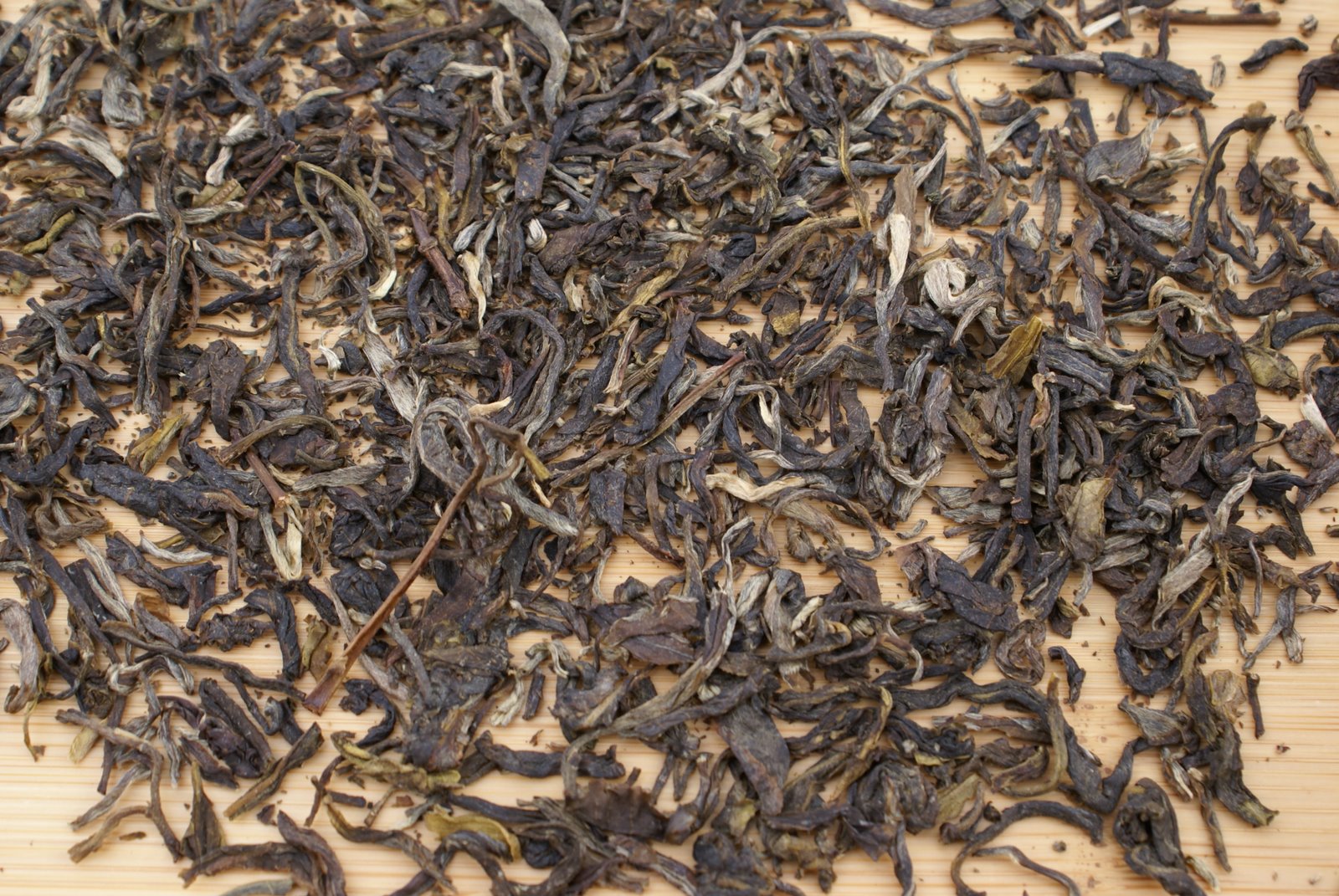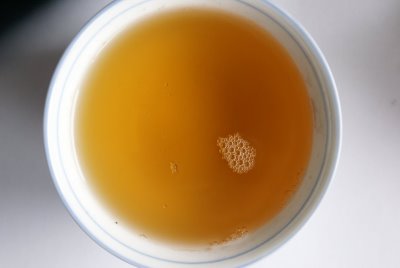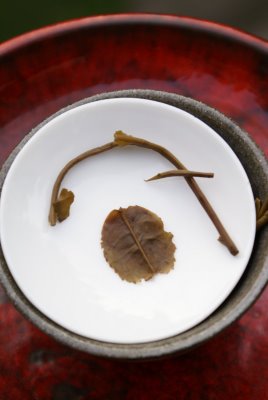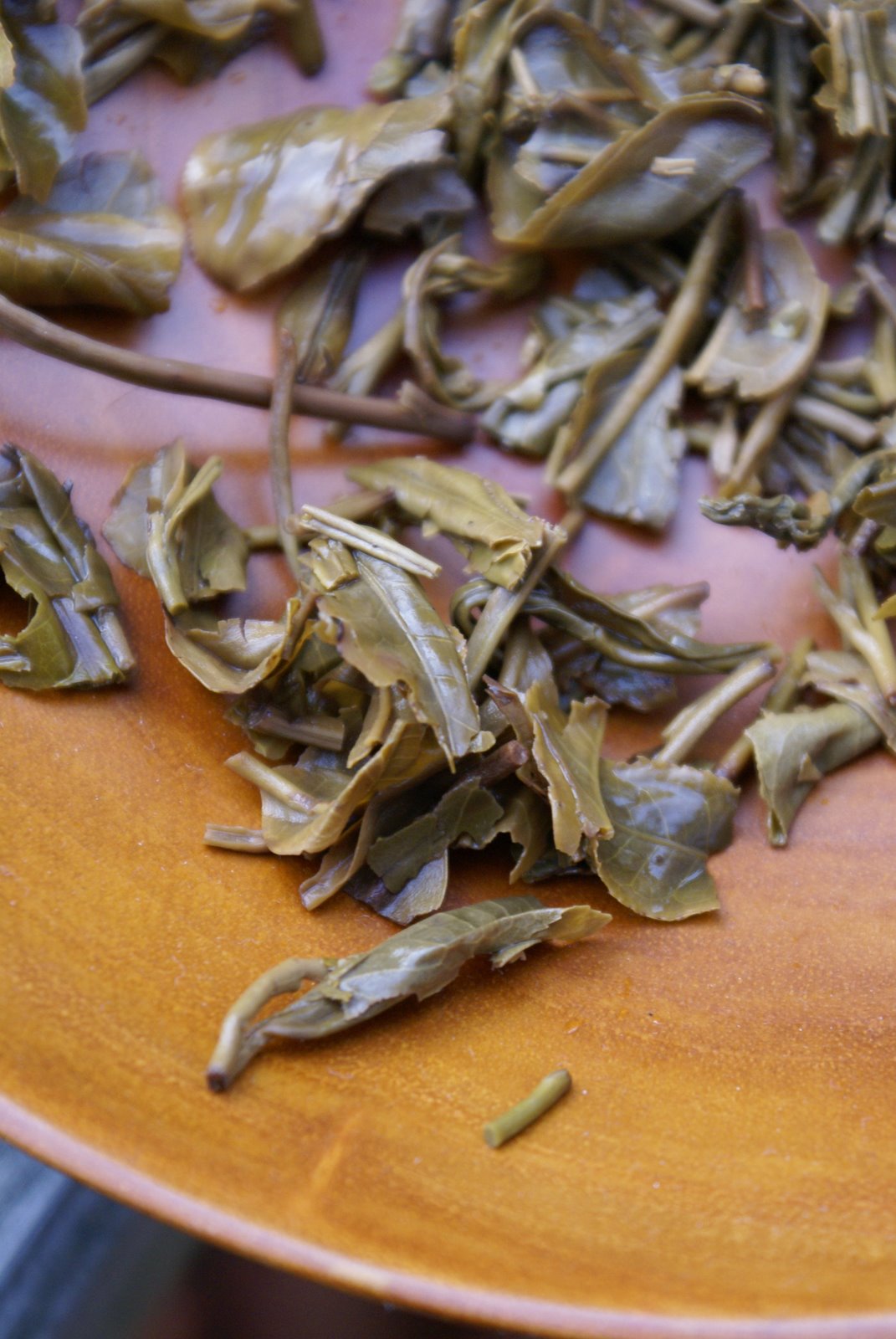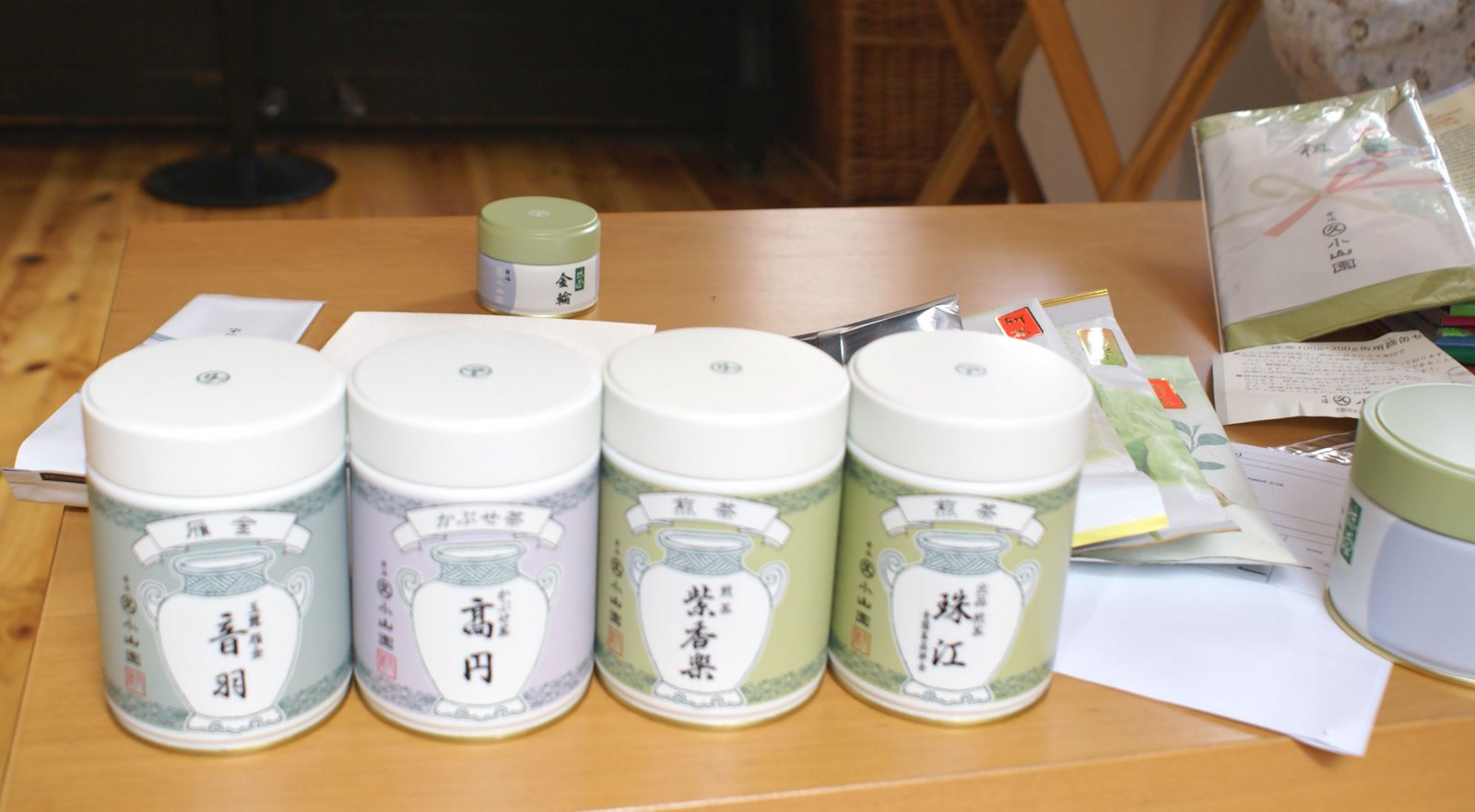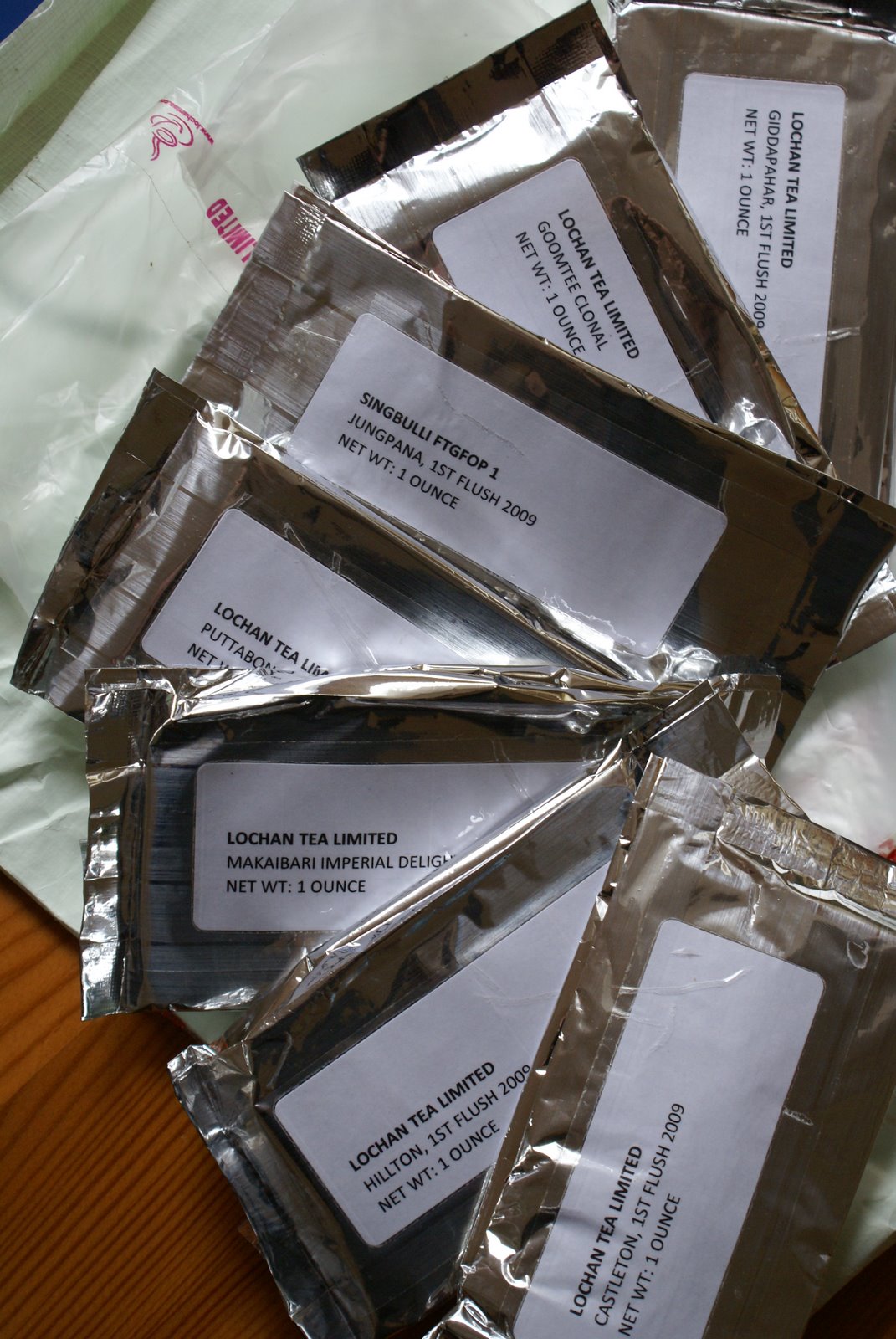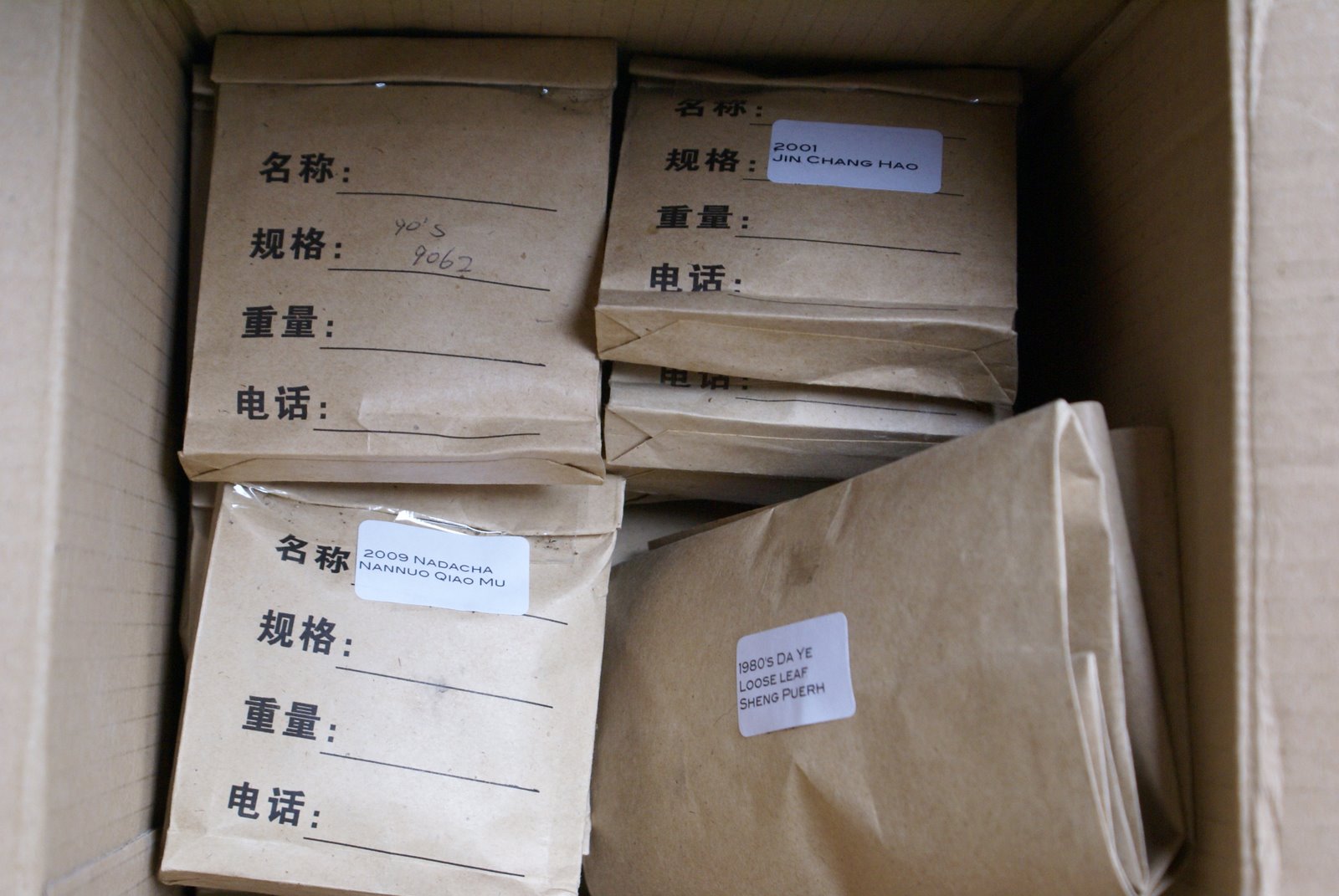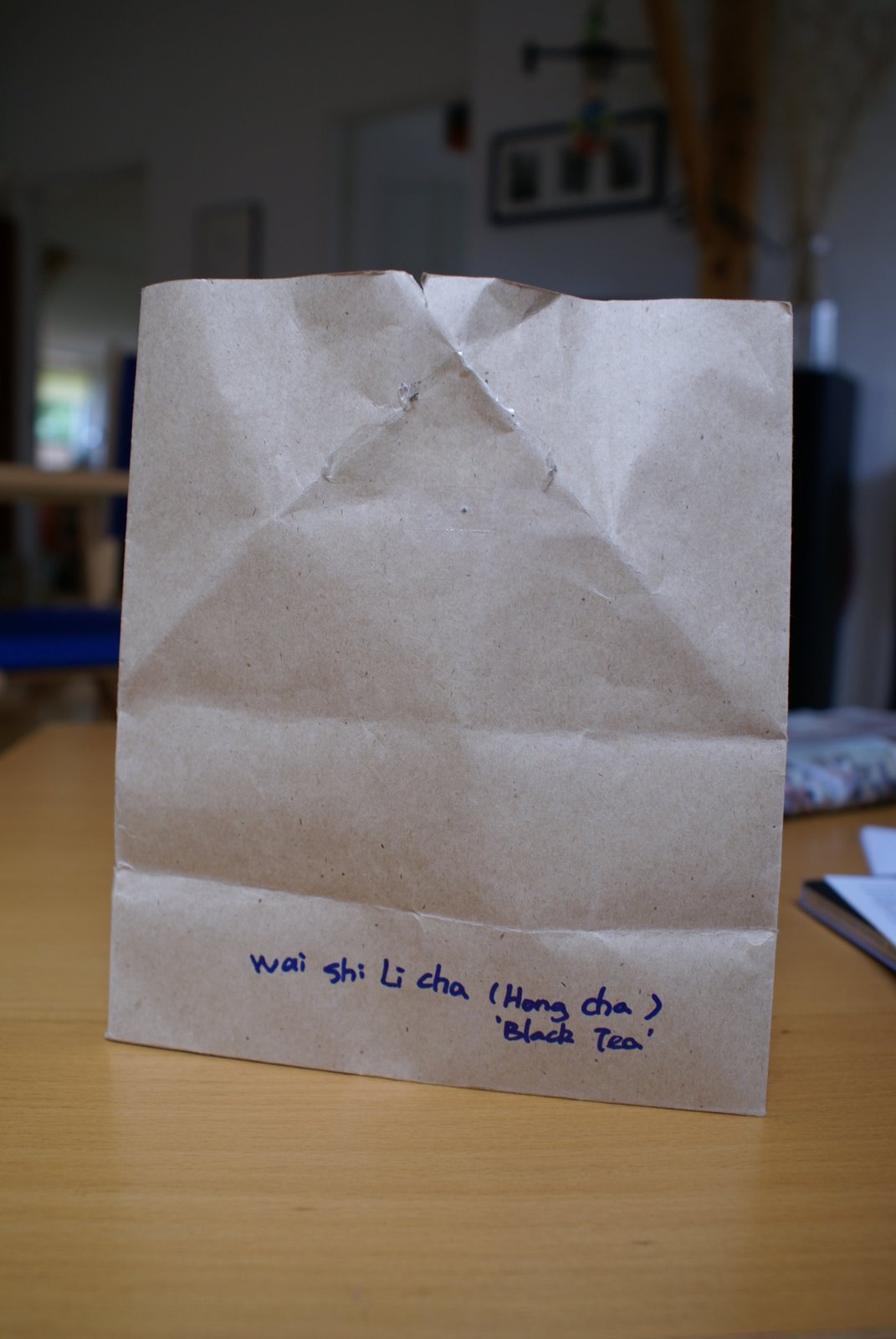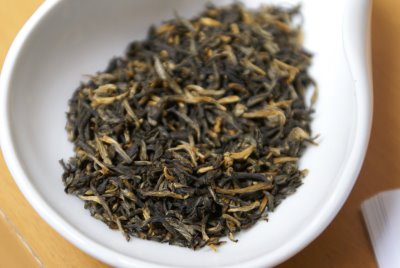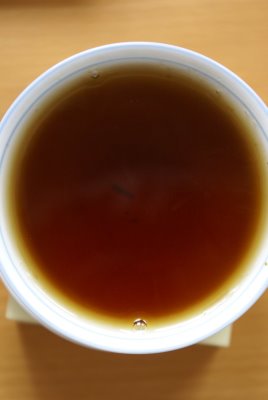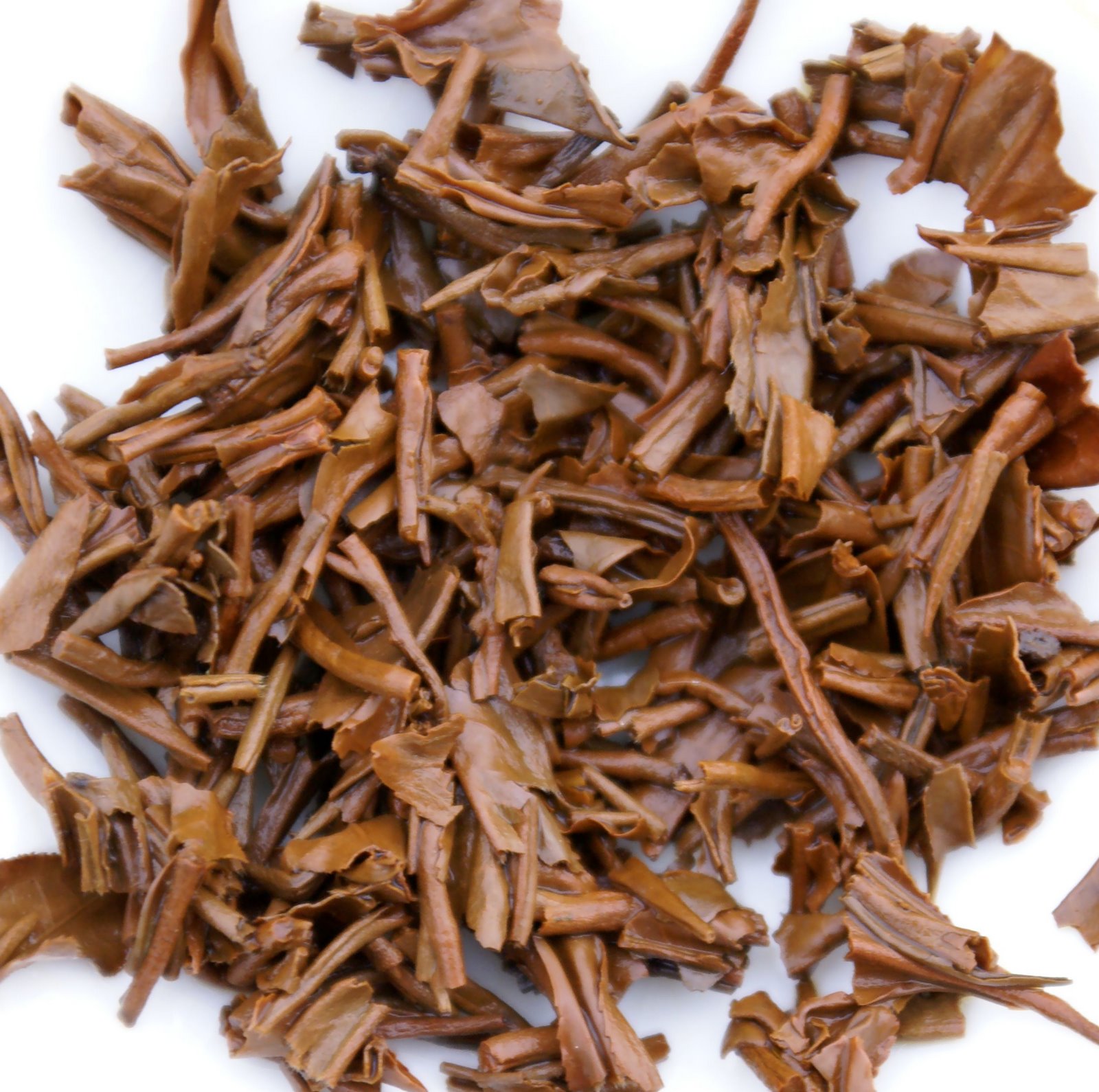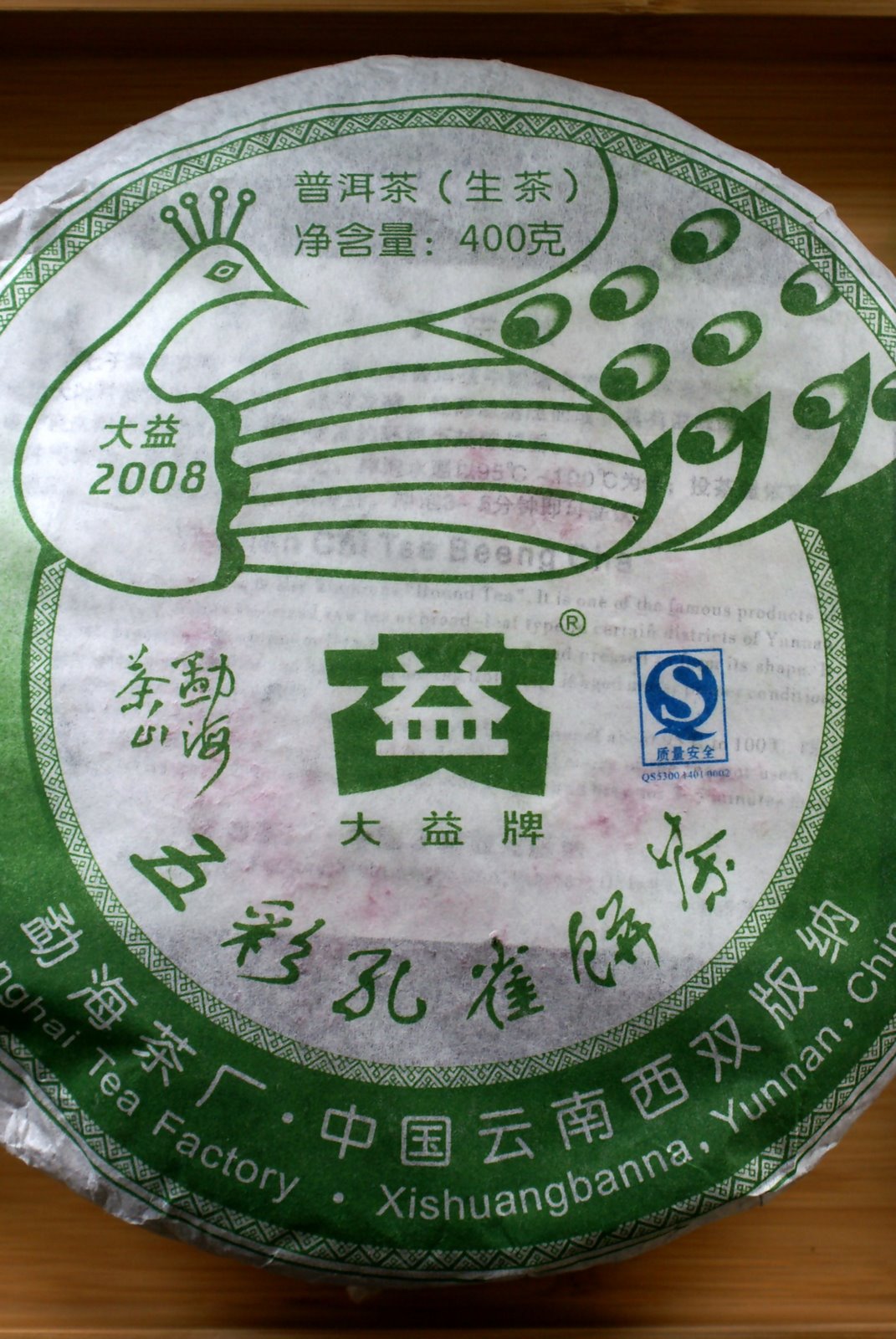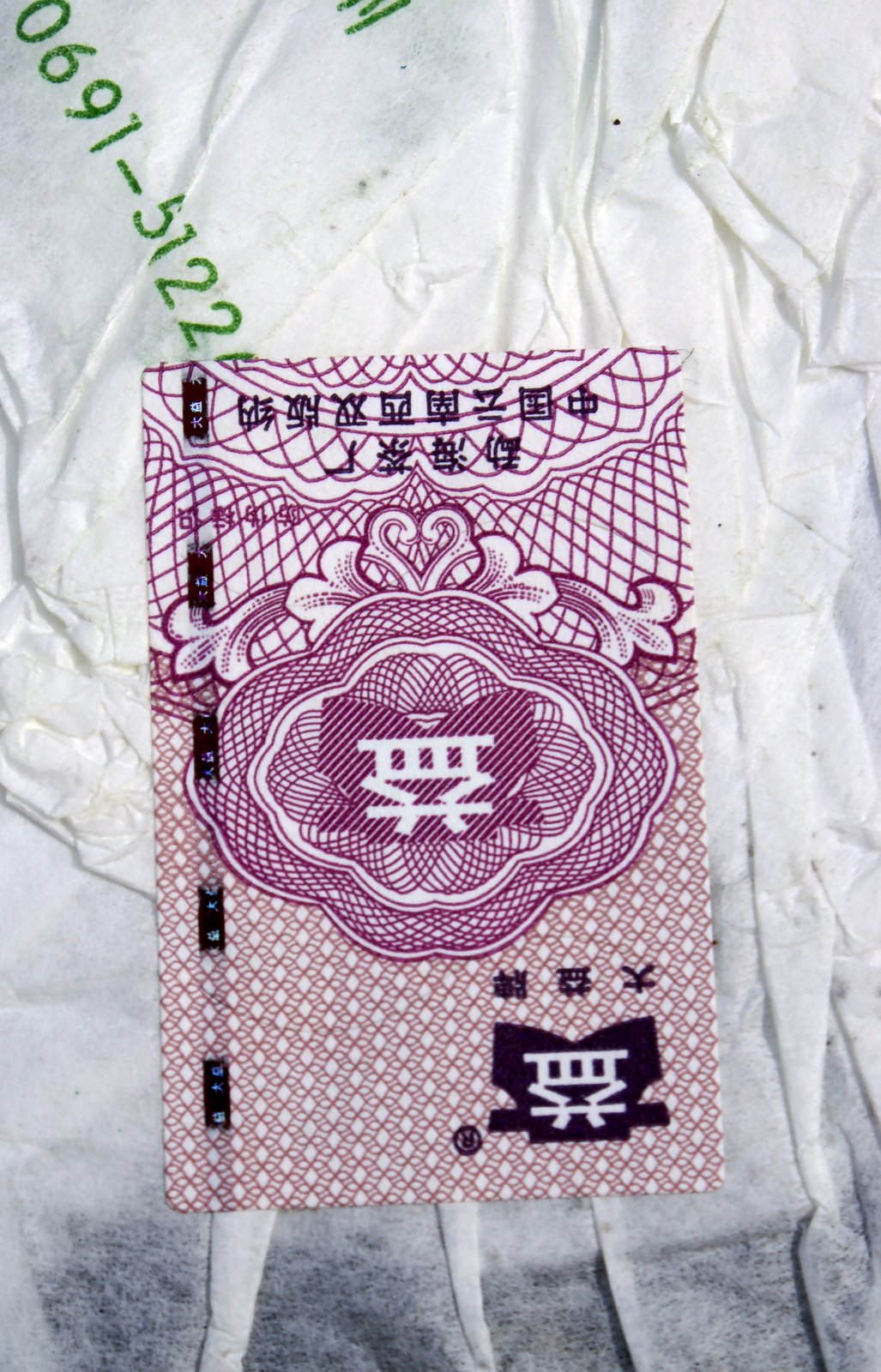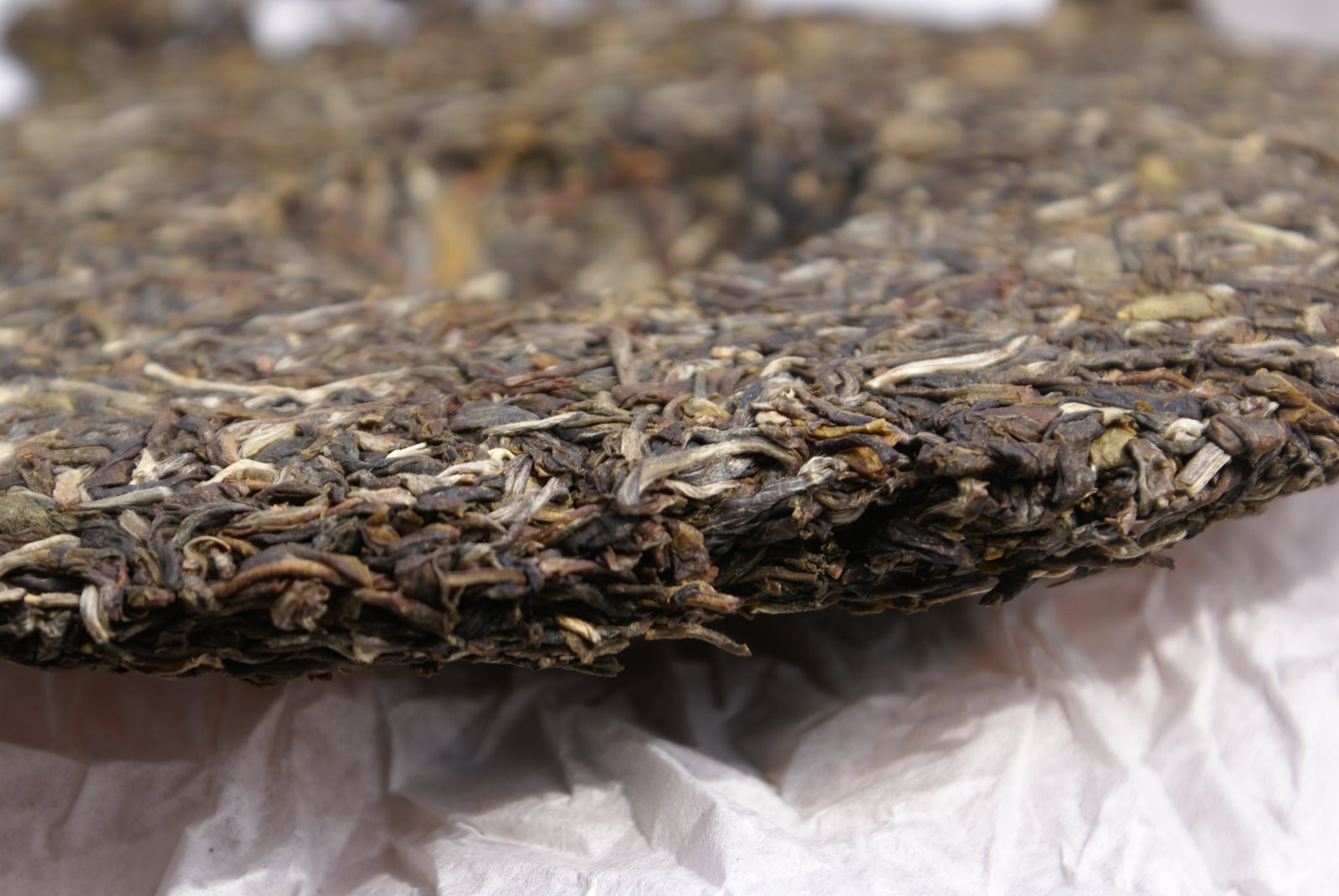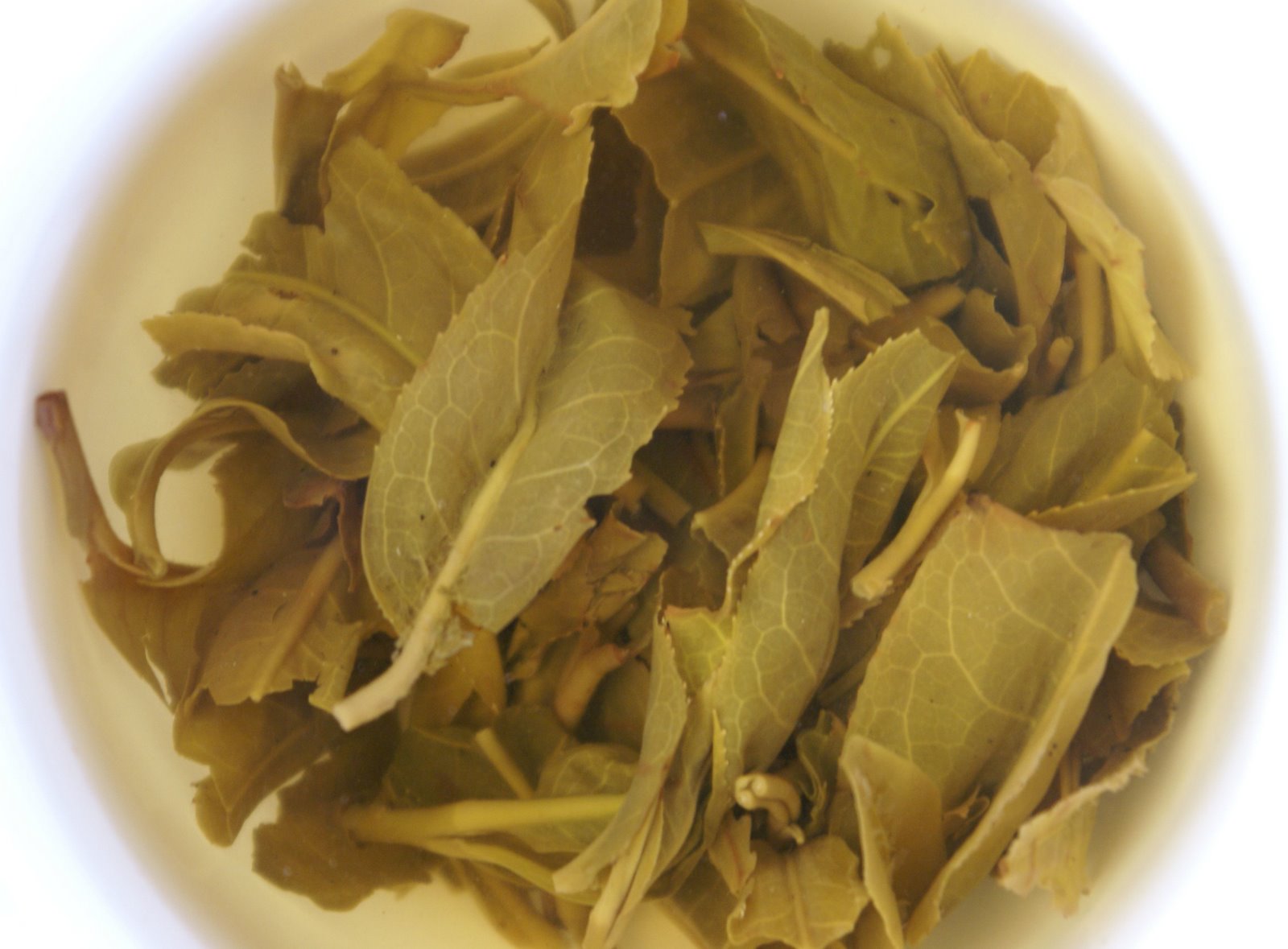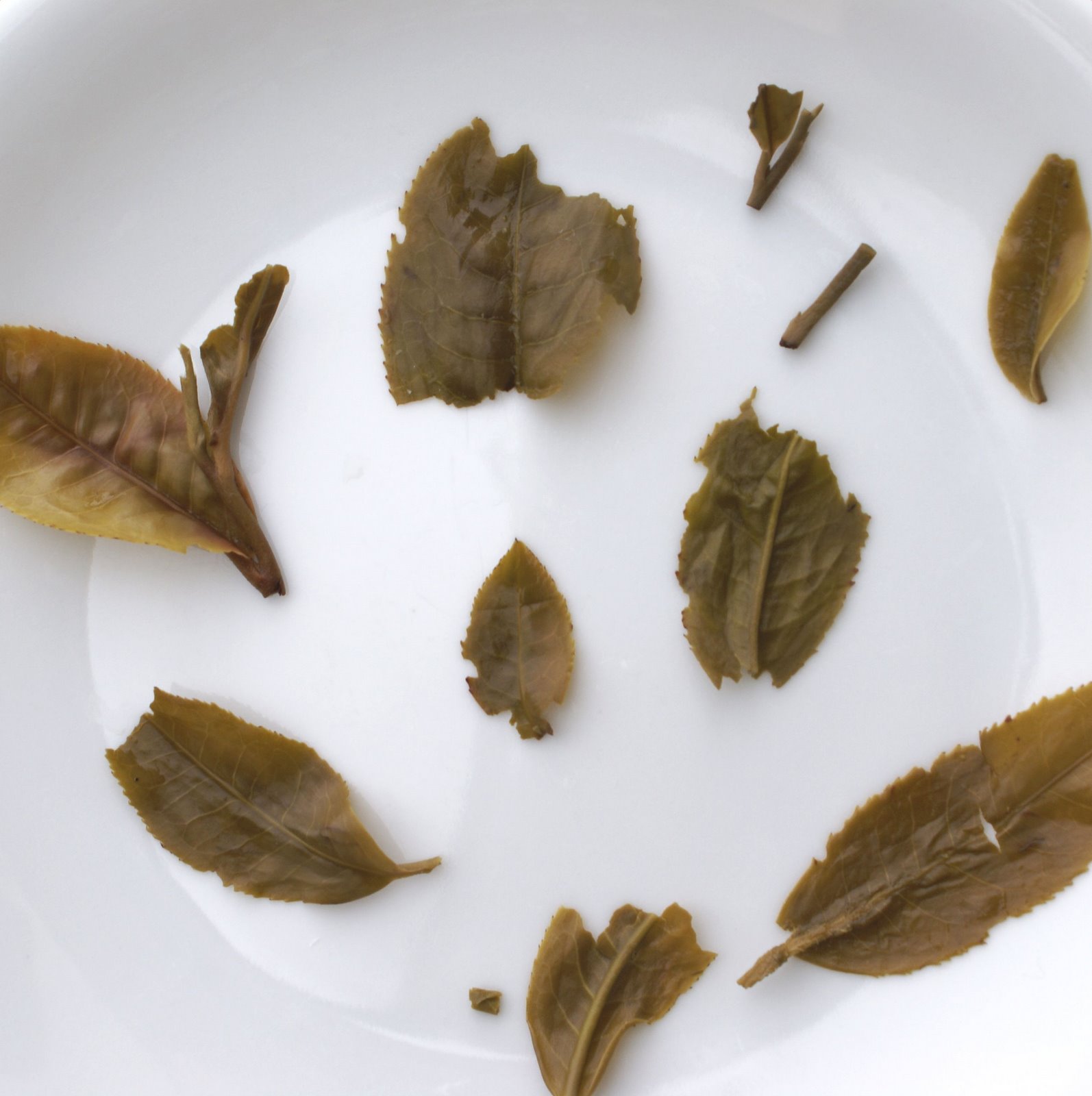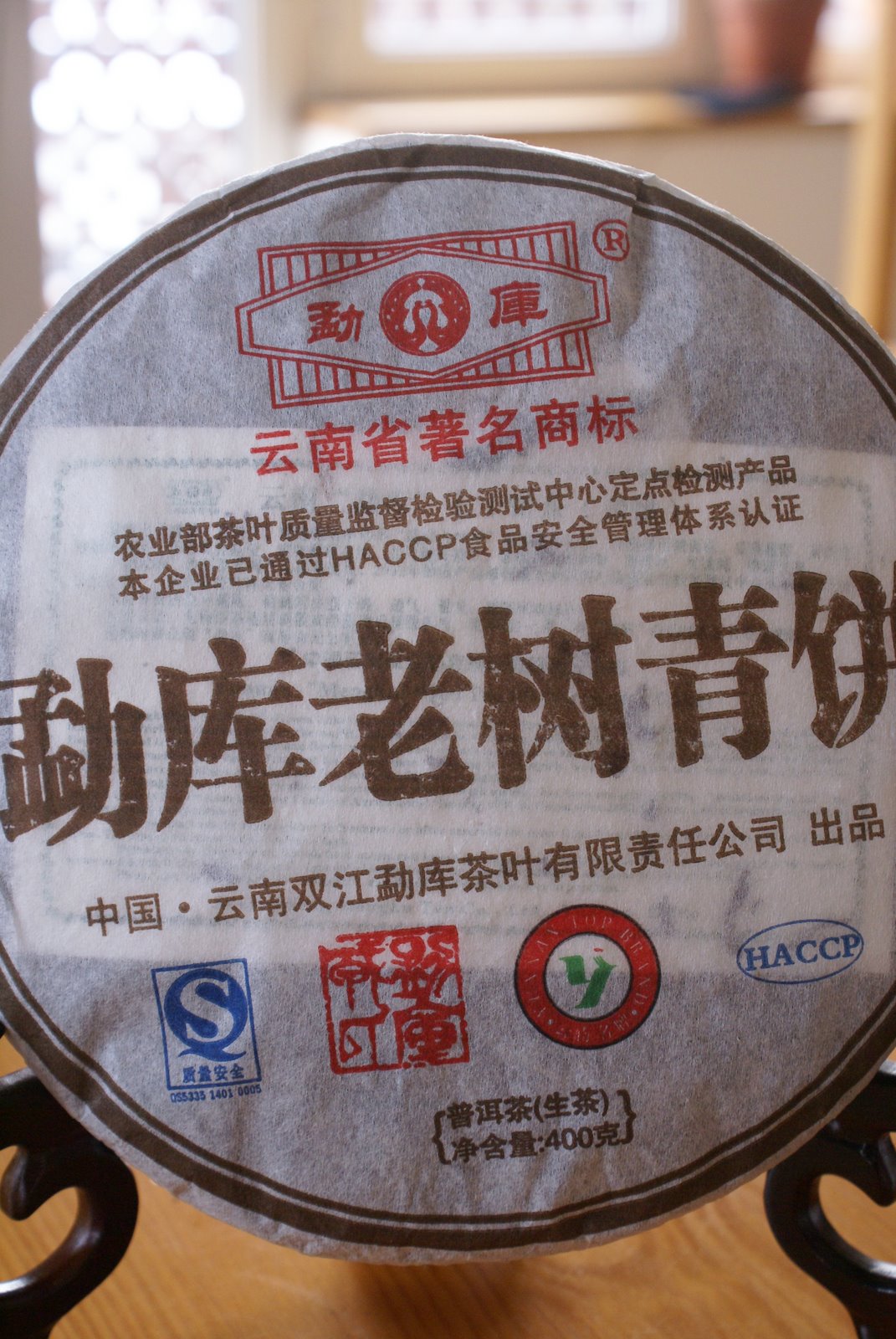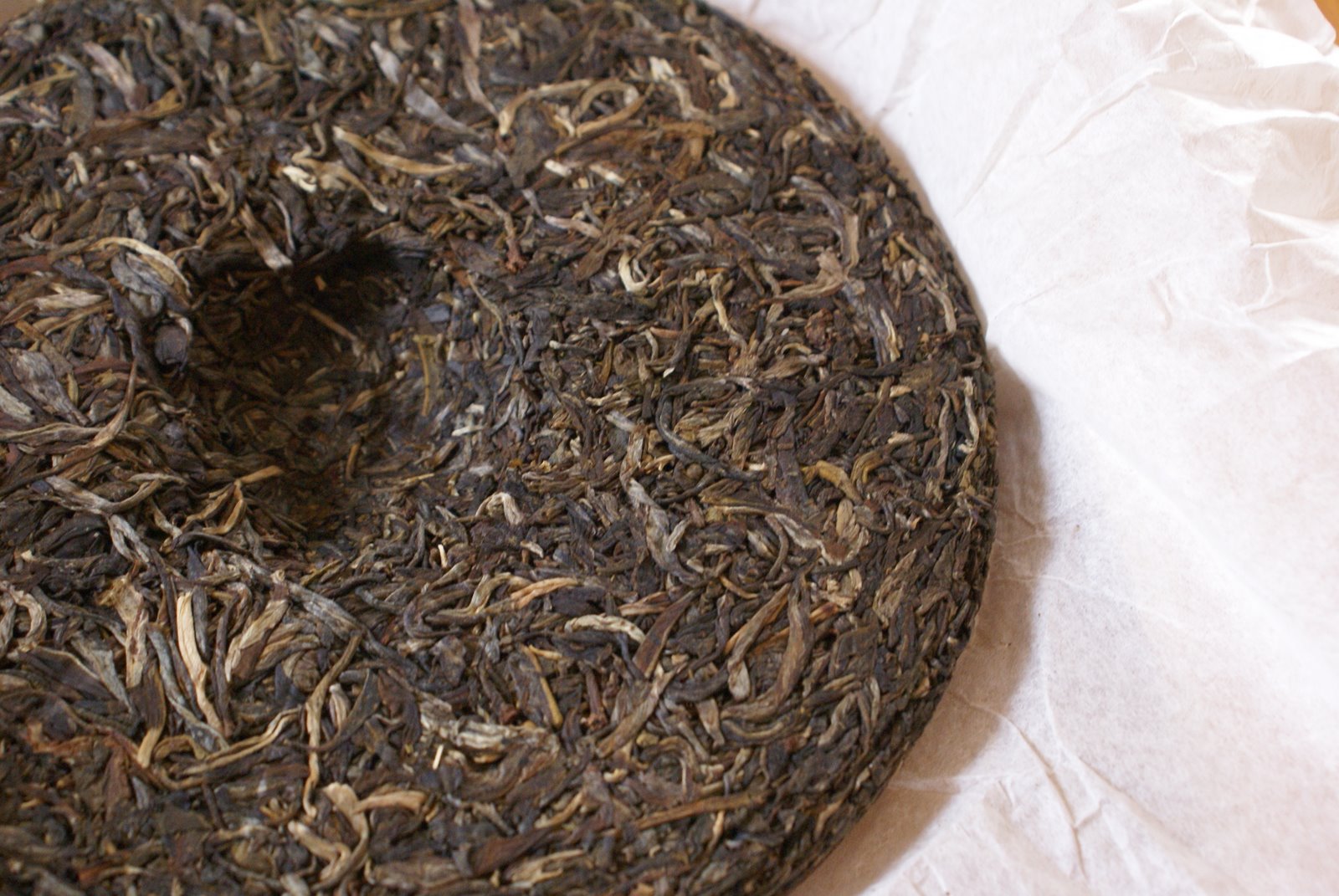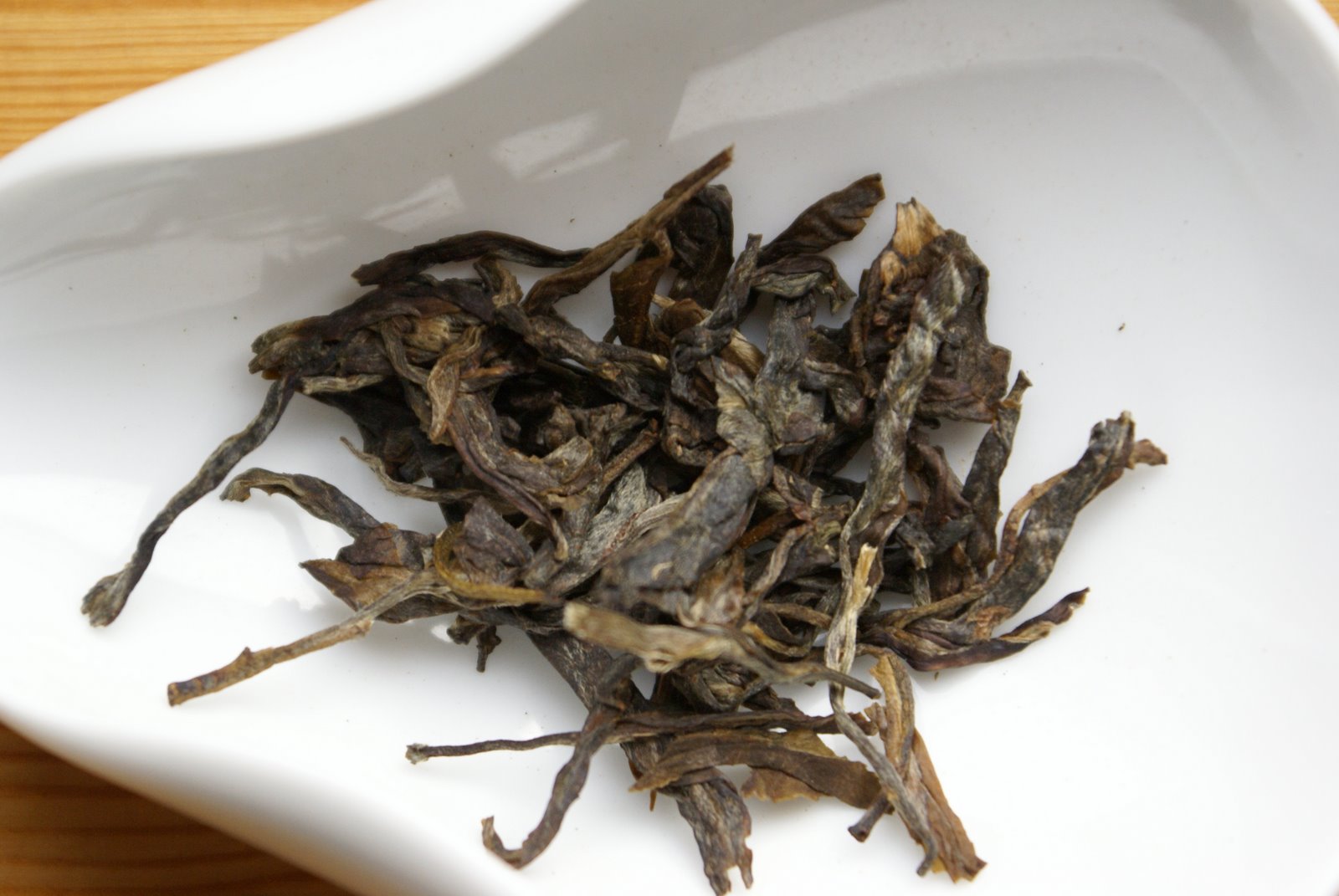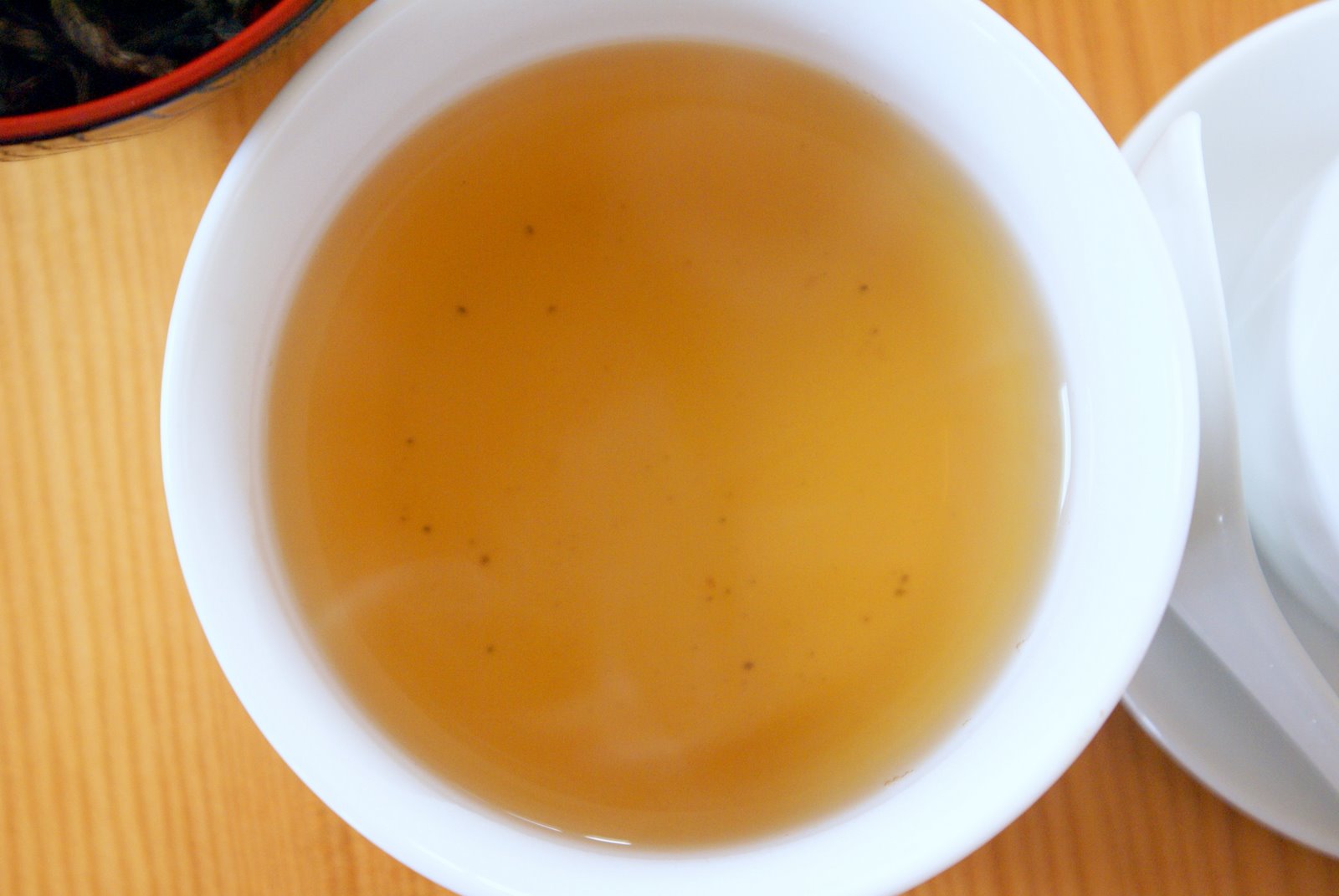(5) 2009 Uji Gold Shincha
2008 Gyokuro Kame-Jiru-Shi (O-Cha)
2008 Gyokuro Tama Homare (Marukyu)
2008 Kabusecha Takamado (Marukyu)
2008 Karigane Otowa (Marukyu)
2008 Sencha Miyabi (O-Cha)
2009 Shincha Fukamushi Supreme (O-Cha)
2009 Shincha Shigaraki (Marukyu)
2009 Shincha Shuei (Marukyu)
2009 Shincha Yutakamidori (O-Cha)
Package aside, the dry leaves are a joy to look at:
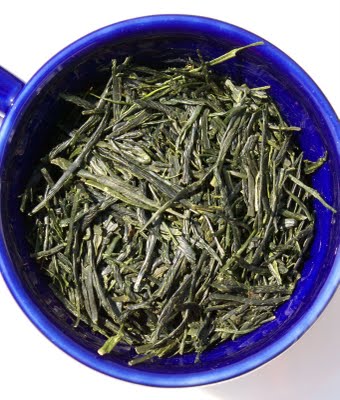 We are on totally different territory than the trio of O-Cha releases reviewed in the last few days (see links at top of post). This is very definitely an asamushi [short-steamed] tea, and the leaves are impeccable, dark emerald in colour, 100% intact, almost exclusively whole. It’s a rare sight among Japanese teas. It has an enjoyable aroma, rather light and elegant, sweet (melon), ungrassy but vaguely reminiscent of spinach, very lightly roasted; compared to the other 2009 shincha teas reviewed in this series, this Uji Gold introduces a sweet-spicy note of vanilla.
We are on totally different territory than the trio of O-Cha releases reviewed in the last few days (see links at top of post). This is very definitely an asamushi [short-steamed] tea, and the leaves are impeccable, dark emerald in colour, 100% intact, almost exclusively whole. It’s a rare sight among Japanese teas. It has an enjoyable aroma, rather light and elegant, sweet (melon), ungrassy but vaguely reminiscent of spinach, very lightly roasted; compared to the other 2009 shincha teas reviewed in this series, this Uji Gold introduces a sweet-spicy note of vanilla.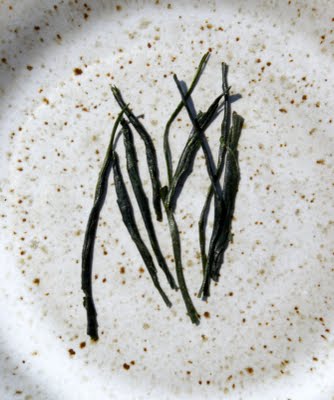 The dry leaf tells a lot about this tea’s characteristics and pretty much preannounces the ups and downs of actually brewing it. As much as I am aesthetically admirative of the leaf quality here, it’s a difficult tea to interpret. It has little to do with Japanese sencha as we know it. Brewed with standard parameters (2g / 120ml / water at 70C / 60–90 seconds) this yields a light greenish-golden colour, and the profile is very close to a continental Chinese green tea. Light-bodied, unpungent, vegetal (in the sense of green beans and spinach, not the more usual grass), with little fruit (melon); only a very minor reminiscence of brothy umami. This profile continues through the second brewing (where Japanese greens usually pack in more oomph). Perhaps a bit of creaminess to the texture (egg custard).
The dry leaf tells a lot about this tea’s characteristics and pretty much preannounces the ups and downs of actually brewing it. As much as I am aesthetically admirative of the leaf quality here, it’s a difficult tea to interpret. It has little to do with Japanese sencha as we know it. Brewed with standard parameters (2g / 120ml / water at 70C / 60–90 seconds) this yields a light greenish-golden colour, and the profile is very close to a continental Chinese green tea. Light-bodied, unpungent, vegetal (in the sense of green beans and spinach, not the more usual grass), with little fruit (melon); only a very minor reminiscence of brothy umami. This profile continues through the second brewing (where Japanese greens usually pack in more oomph). Perhaps a bit of creaminess to the texture (egg custard).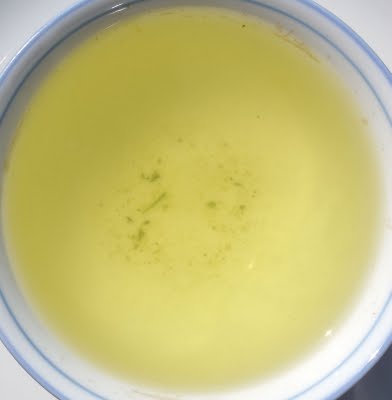
Infusion no. 1: 60 seconds at 70C.
Logically for a whole leaf tea, where the leaf surface to water ratio is far larger than in a fragmented leaf fukamushi [long-steamed] tea such as this, it’s reasonable to increase leaf quantity, water temperature, or both in order to get better extraction and more depth of flavour. From these options, a higher 80–85C temperature is fine, with more palate presence and length (but a finish that’s bit hard), but I’ve been happier with a higher dosage. Move from 2 to 4 grams of dry leaf in the pot (60 seconds for the first brewing, shorter afterwards) and you’re getting a totally different animal. Deeper in colour (though still yellowish rather than jade-green), much more saline and mineral, this reminded me of some avant-garde white wines from Alsace or Friuli in its full terroir presence. I’m interpreting this as a signature of Uji, Japan’s most renowned tea growing location. Still not exactly a typical Japanese sencha, again reminiscent of something more continental, but now a really exciting tea.
As it stands, I found this an eye-opener. Too often we are stuck with what we deem is ‘typical’: an important concept in interpreting any agricultural product but dangerous when it starts to handicap truly individual ones. This 2009 Uji Gold is precisely that: a high-quality product with a distinctive style. I’m sorry to see my 50g pack drawing to an inevitable end.
No mistake: this is Japanese shincha.


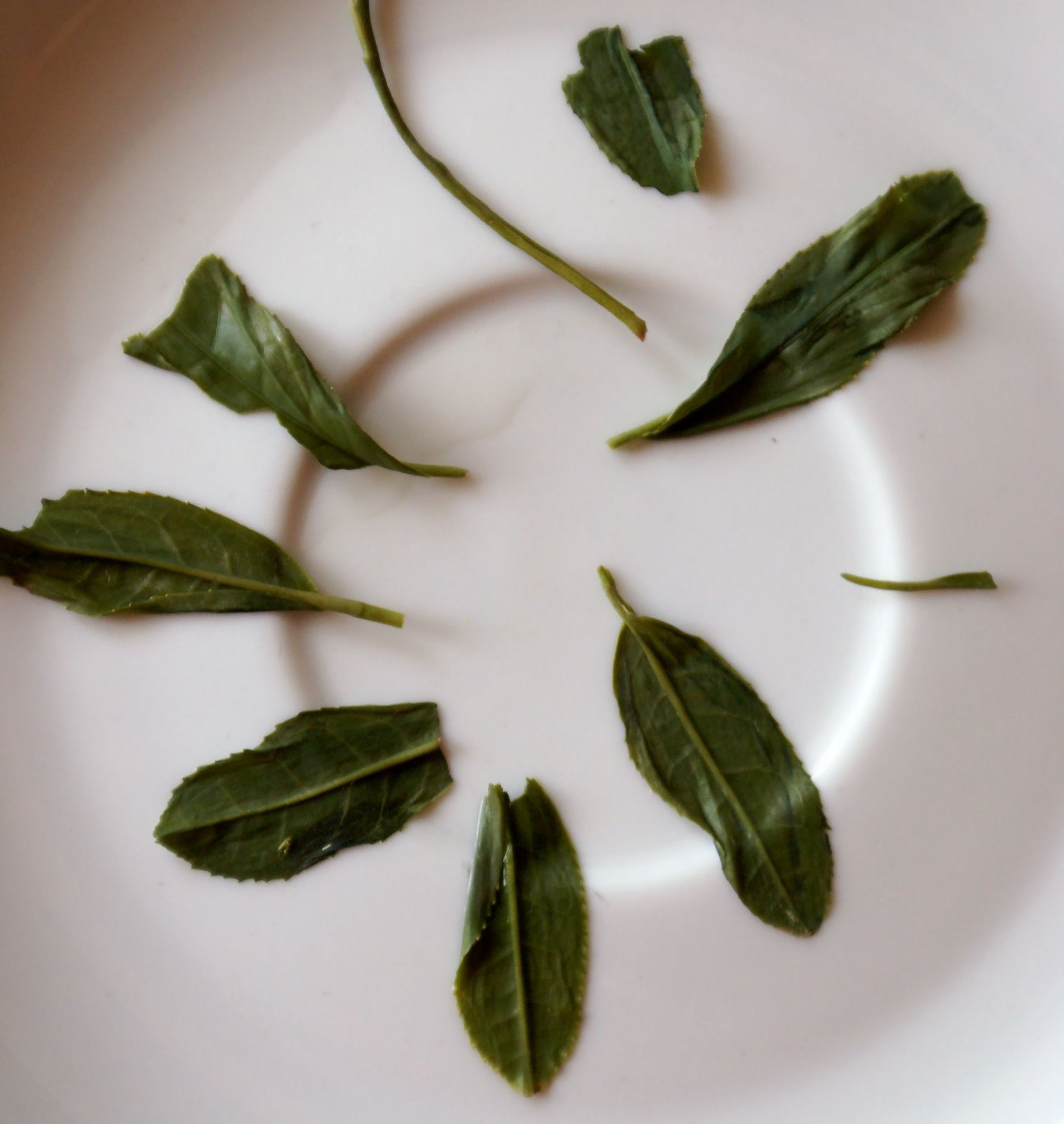
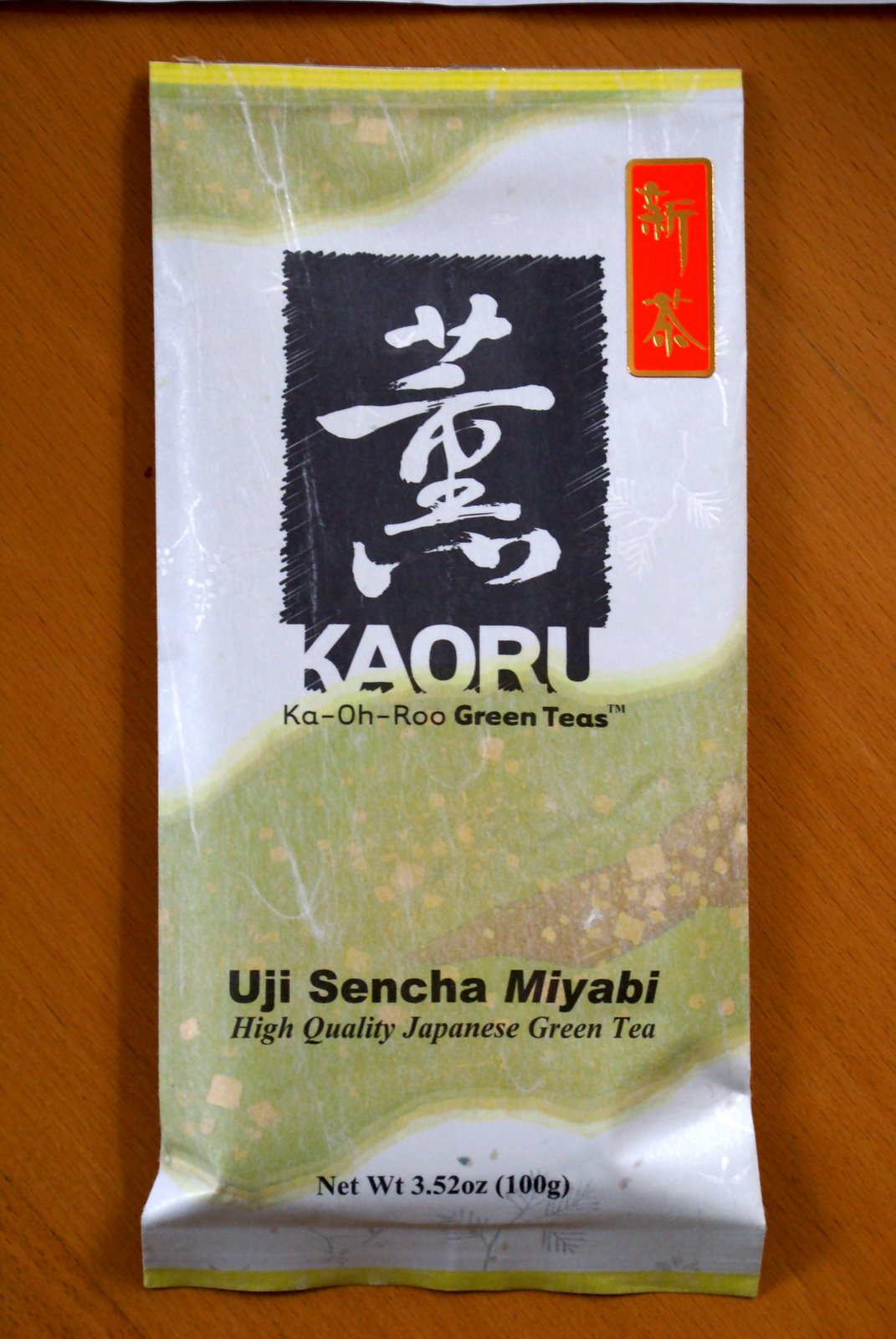
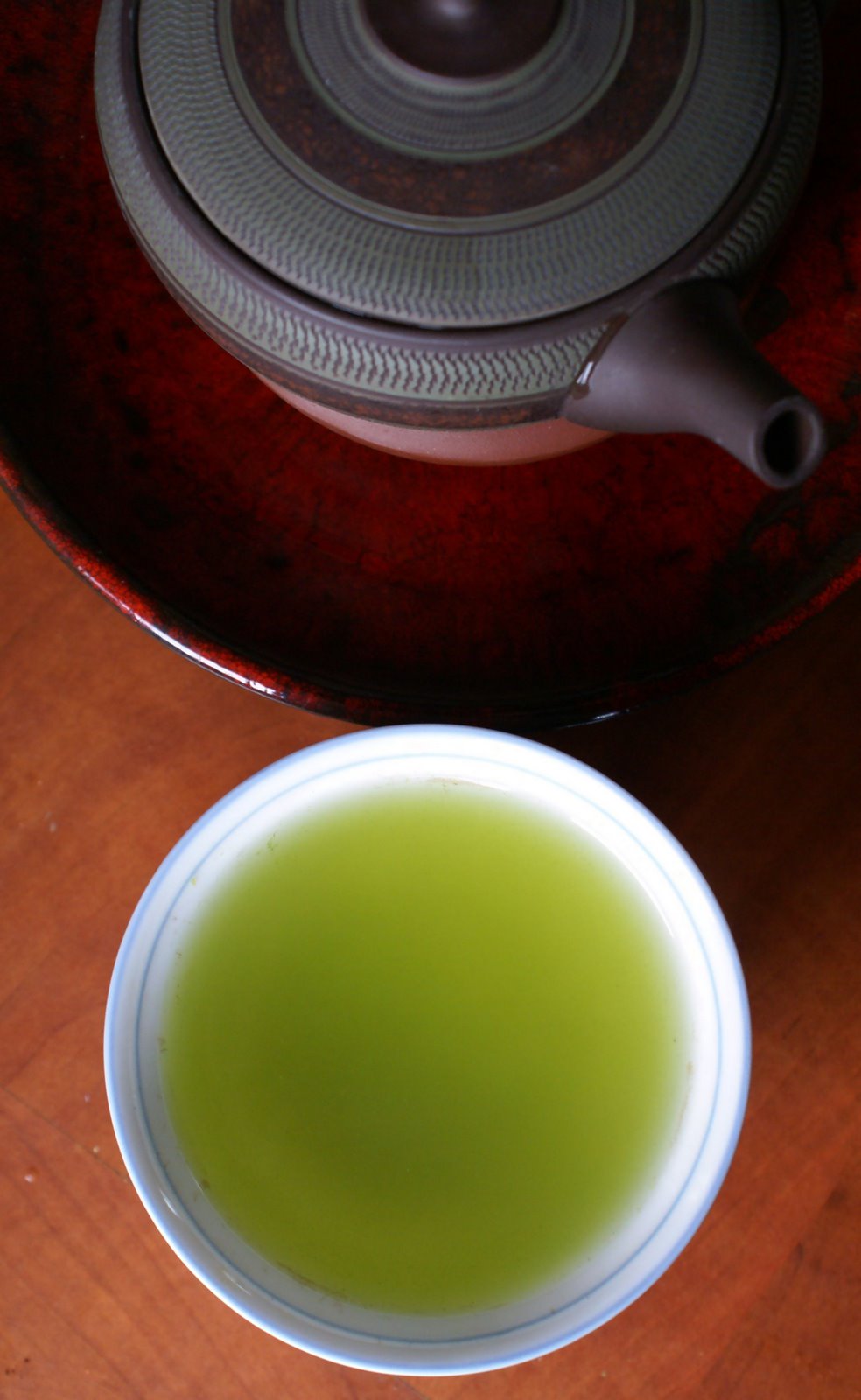
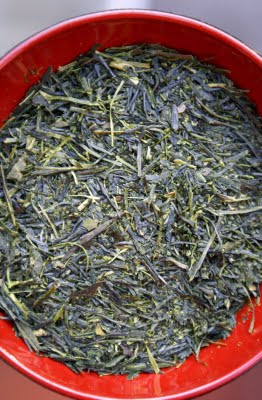
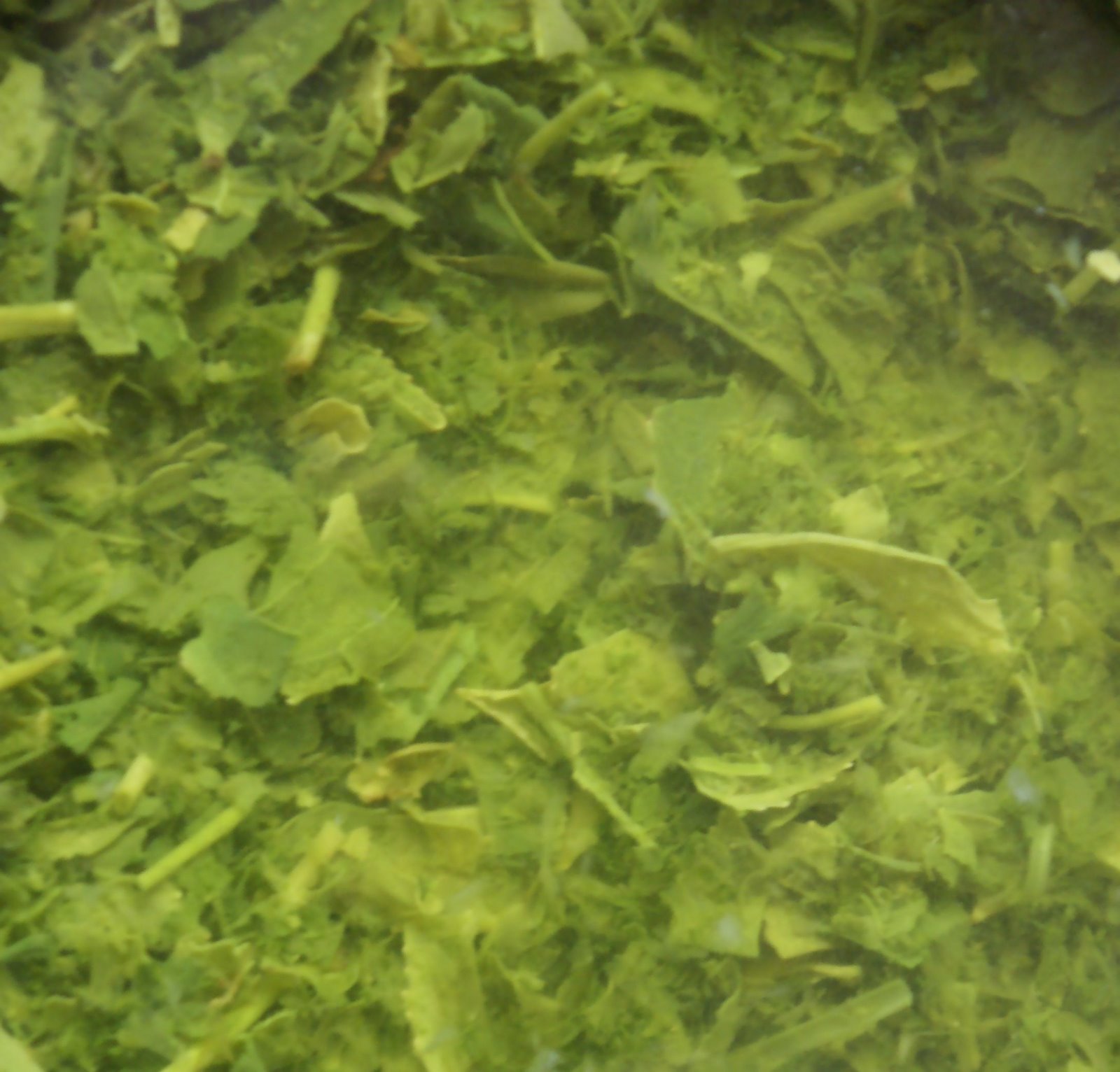
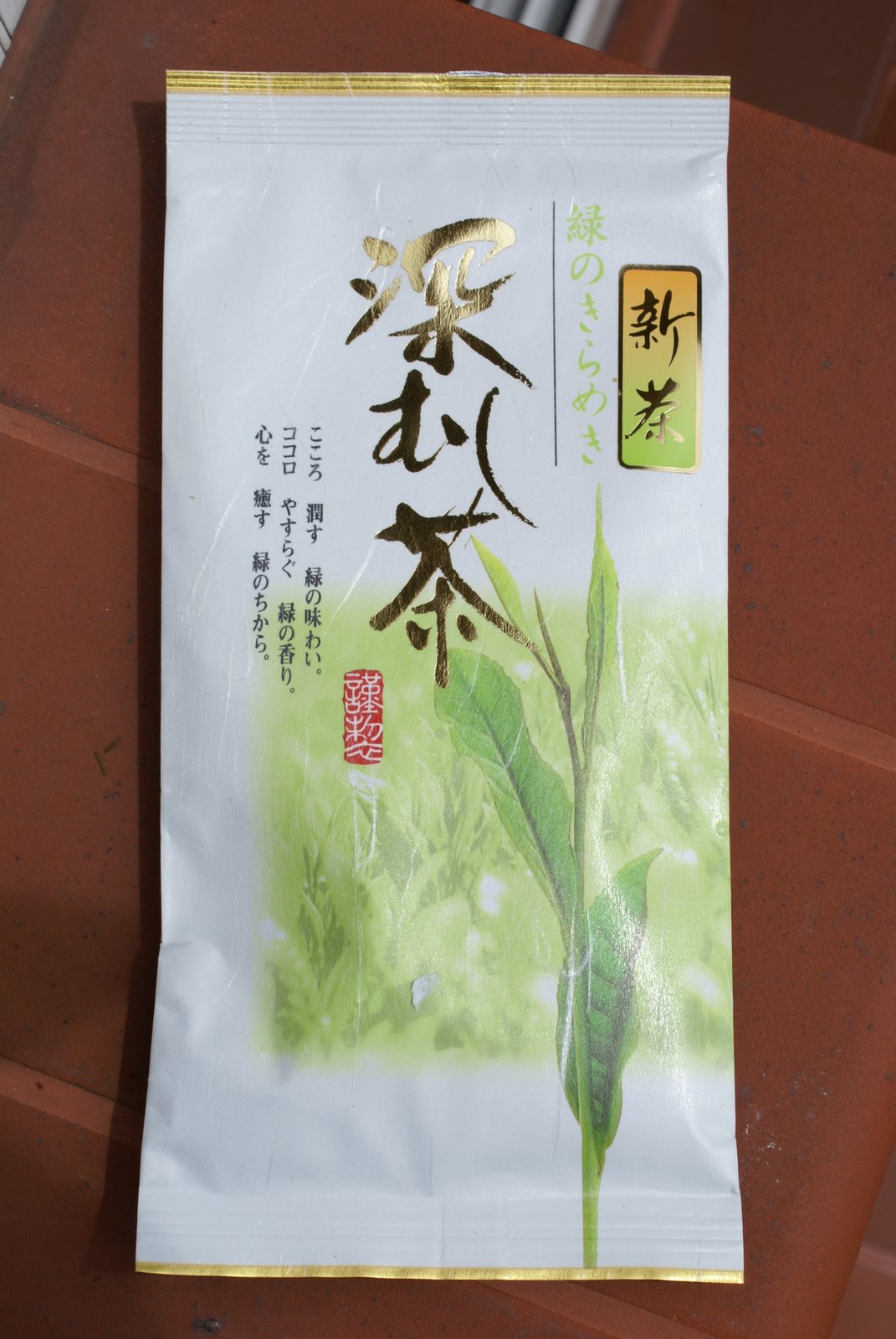
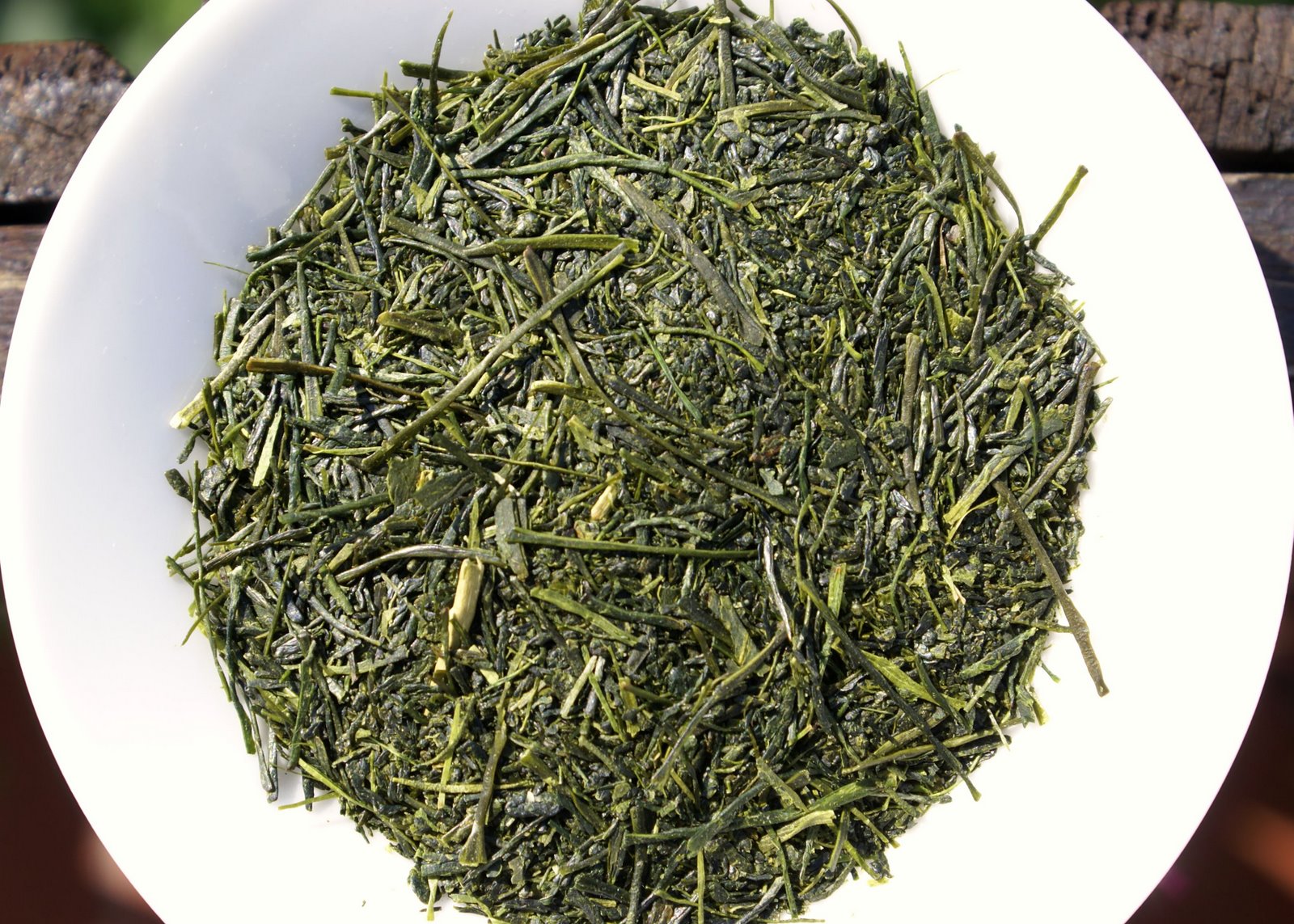
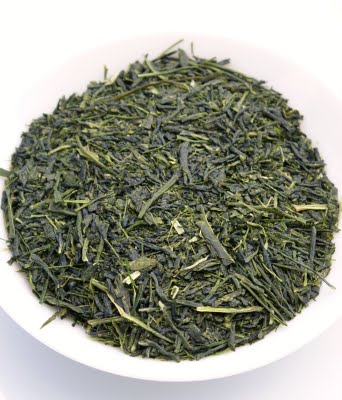
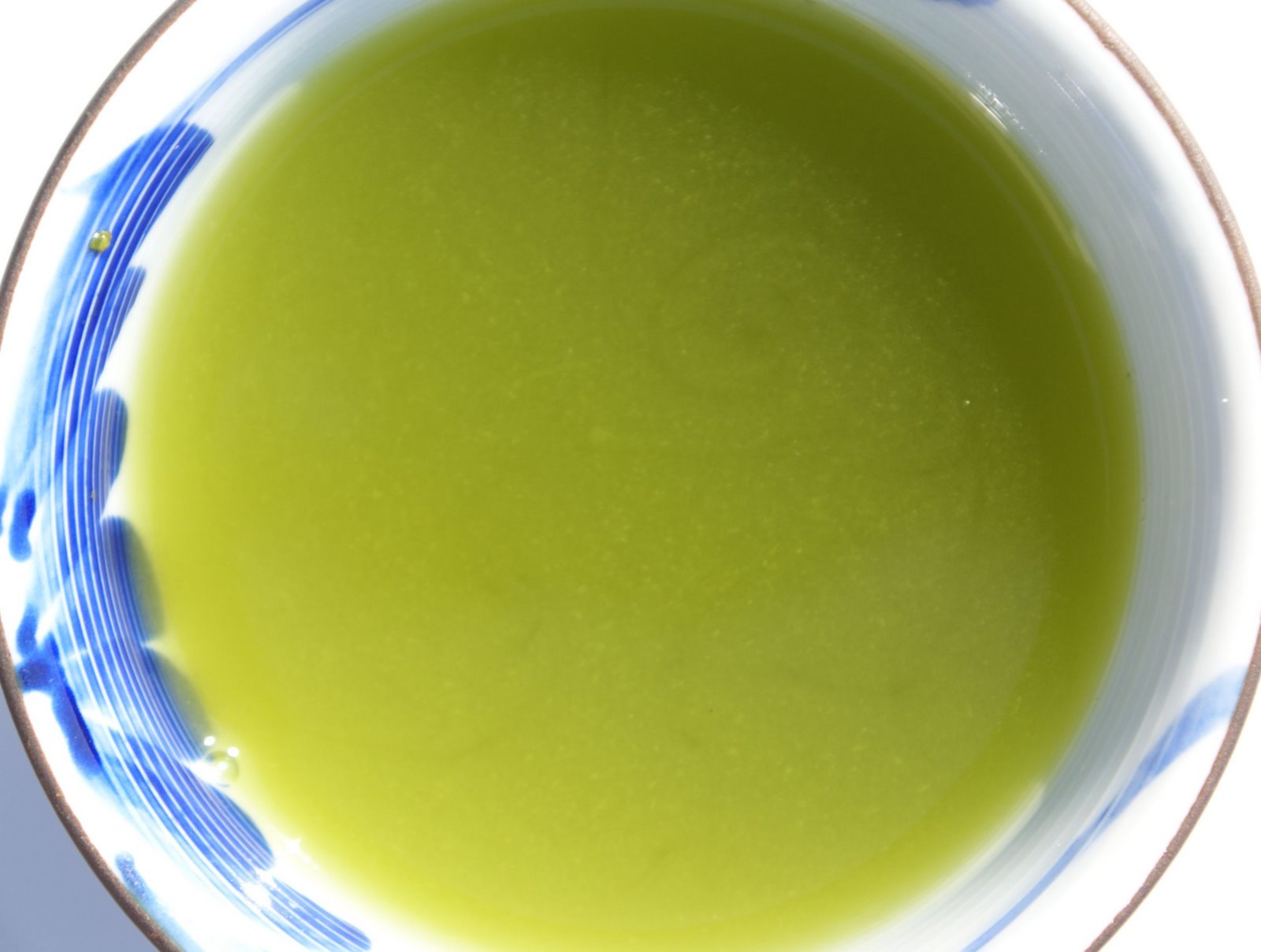
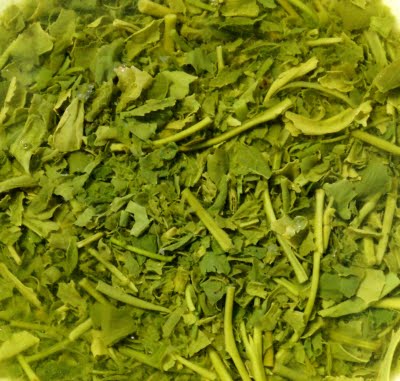 As an aside, it’s one of the most short-lived teas I’ve come across, in the sense of an obvious drop in quality and complexity within a few weeks from opening the (nitrogen-filled as per O-Cha declaration) pack. While my inaugural sessions revealed some limey and grassy tang on the finish and were fairly vivid, four weeks later I am left with a simpler, flatter profile. This is understandable, fukamushi being one of the most fragmented leaf teas out there, and with the higher surface of exposure to air it just loses freshness so much more quickly than whole-leaf stuff.
As an aside, it’s one of the most short-lived teas I’ve come across, in the sense of an obvious drop in quality and complexity within a few weeks from opening the (nitrogen-filled as per O-Cha declaration) pack. While my inaugural sessions revealed some limey and grassy tang on the finish and were fairly vivid, four weeks later I am left with a simpler, flatter profile. This is understandable, fukamushi being one of the most fragmented leaf teas out there, and with the higher surface of exposure to air it just loses freshness so much more quickly than whole-leaf stuff.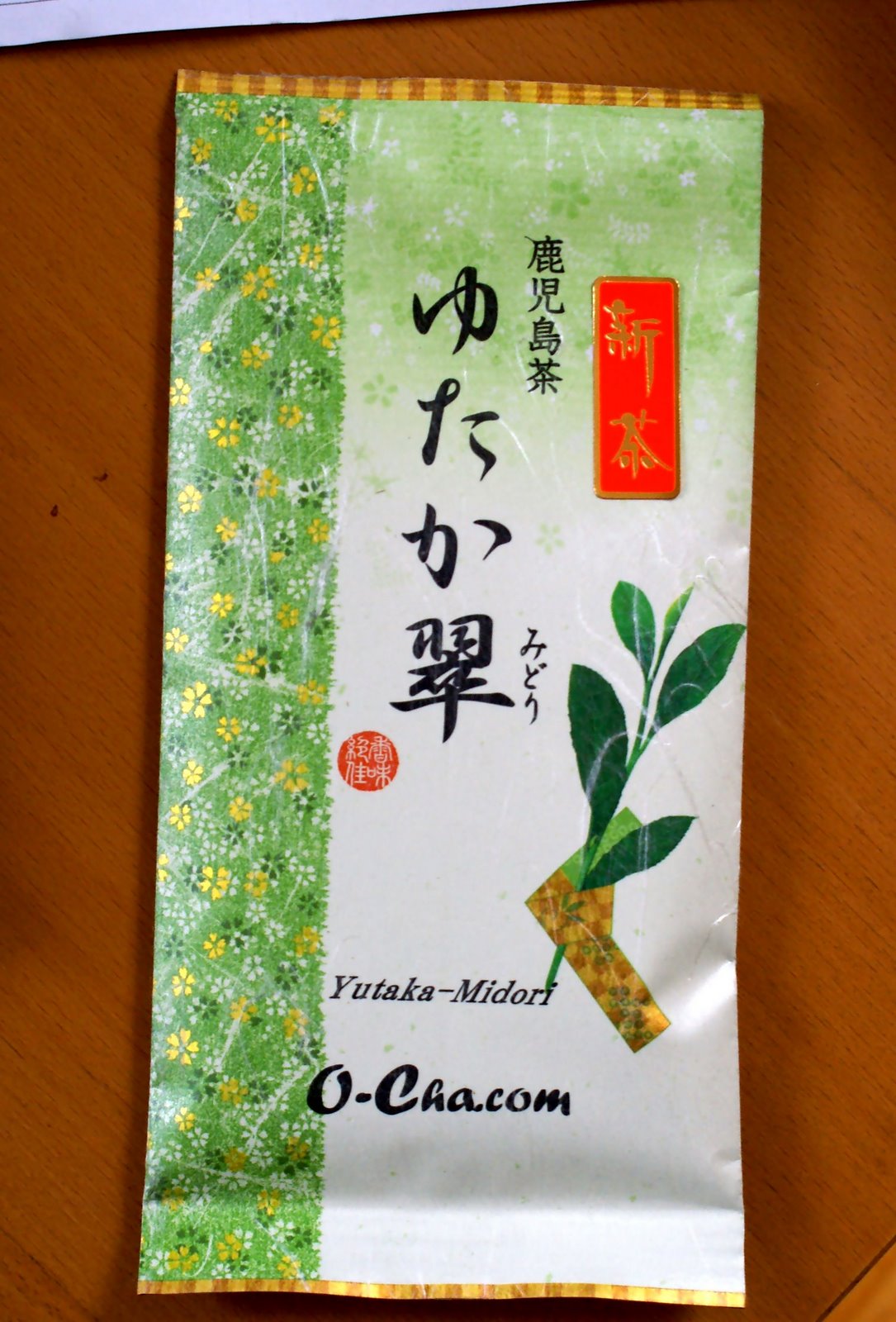
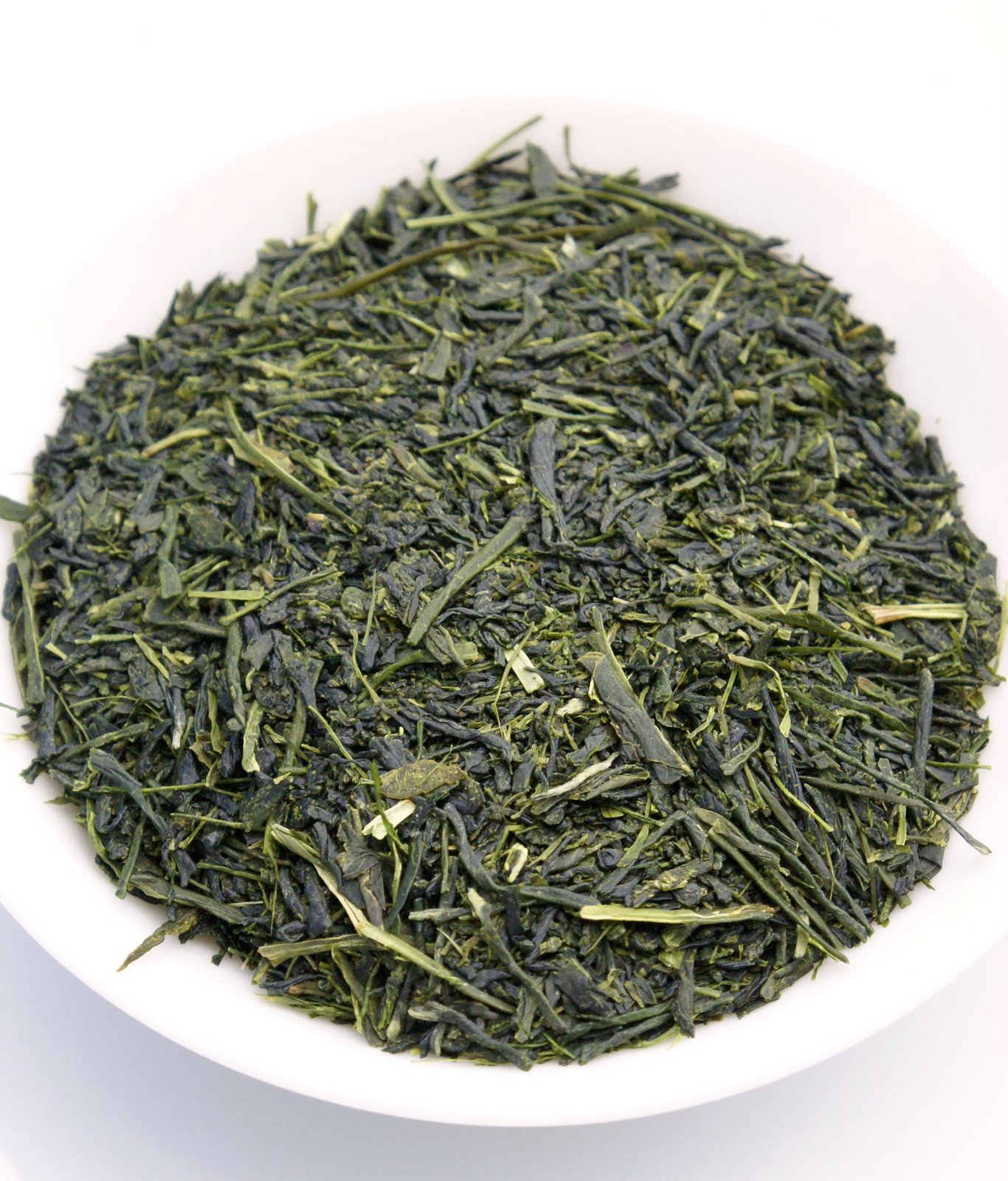
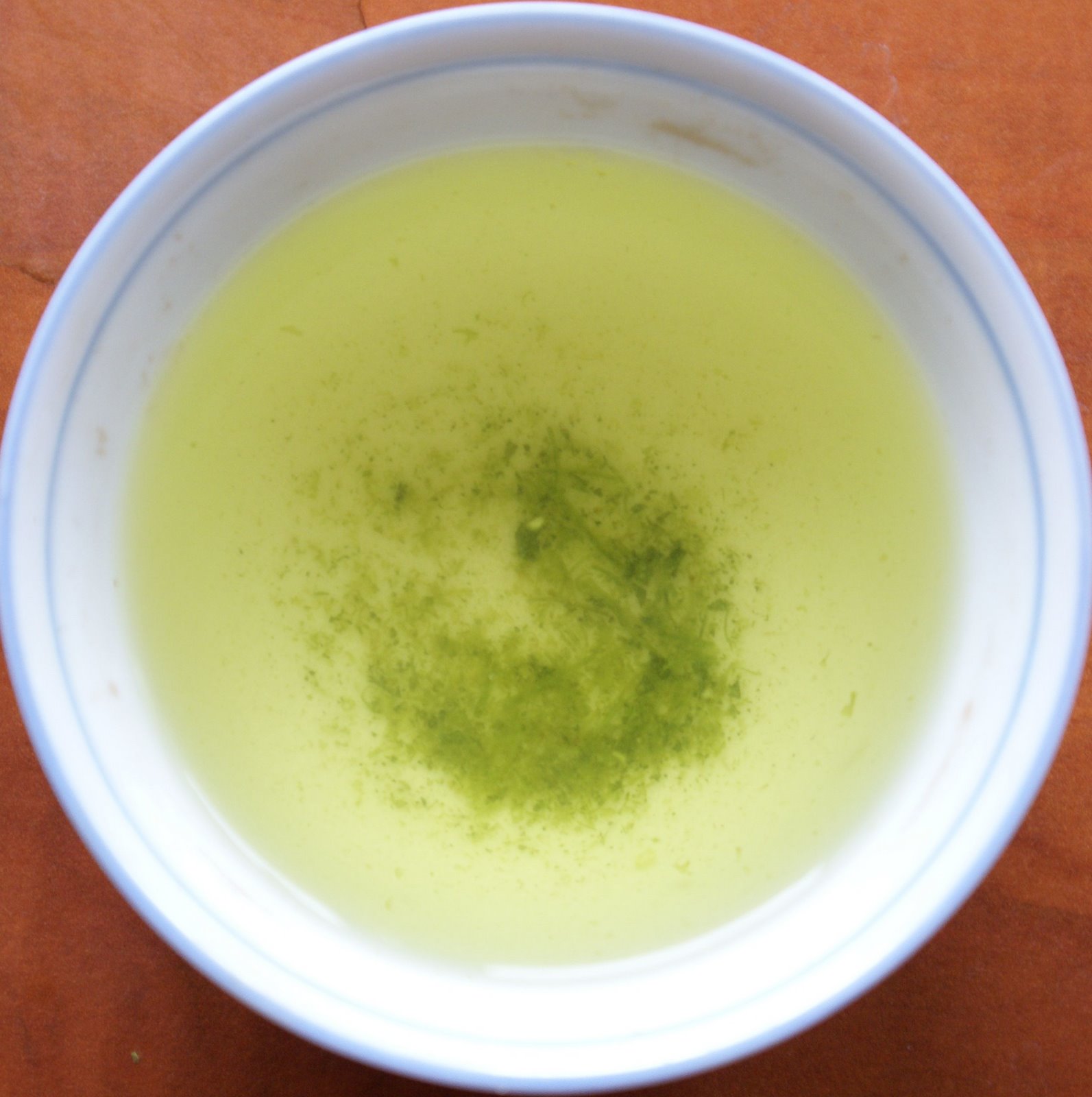
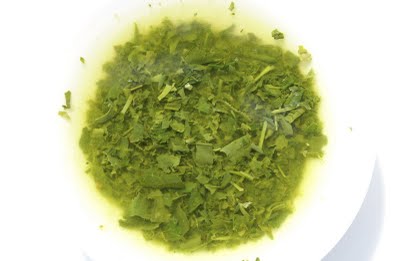
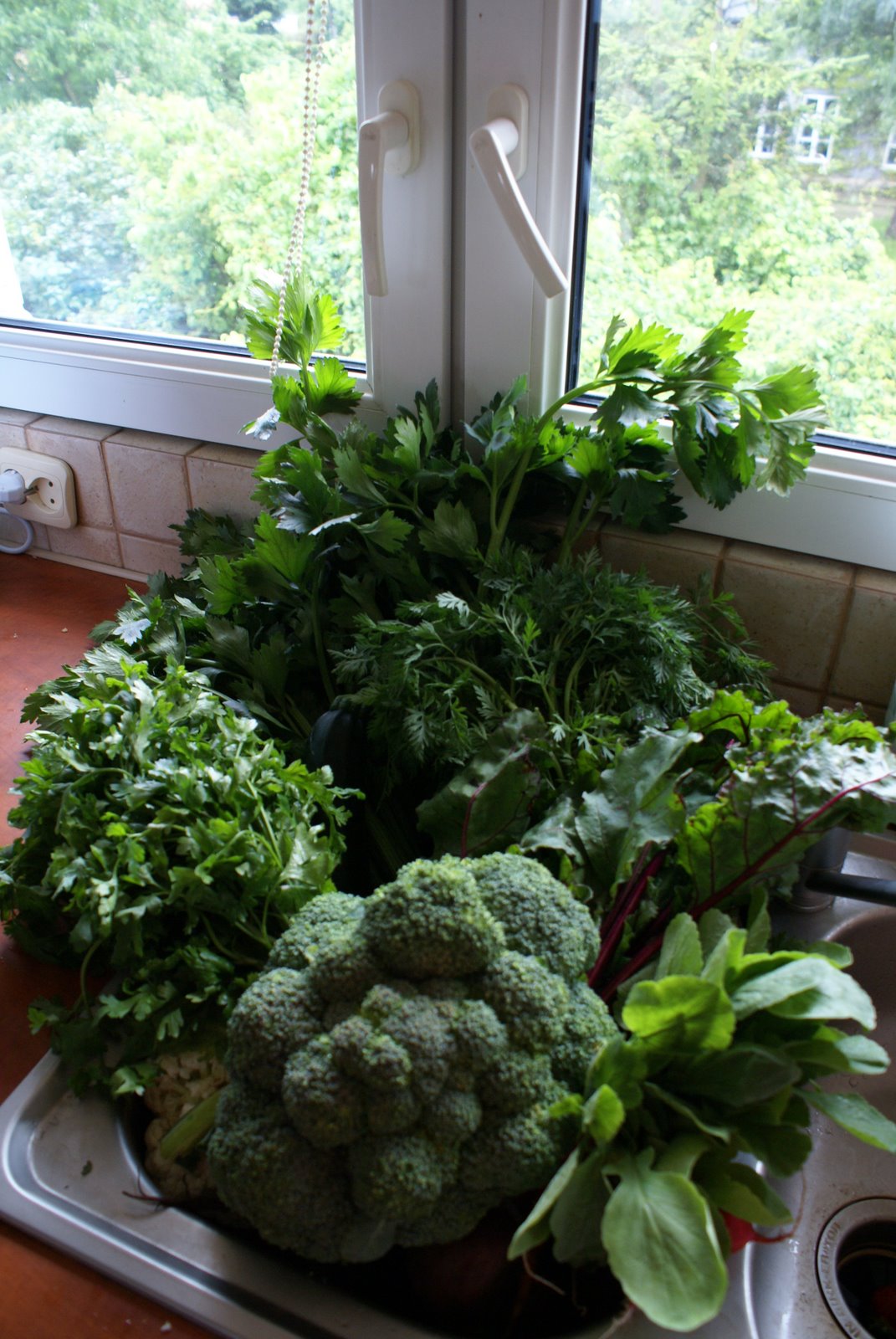
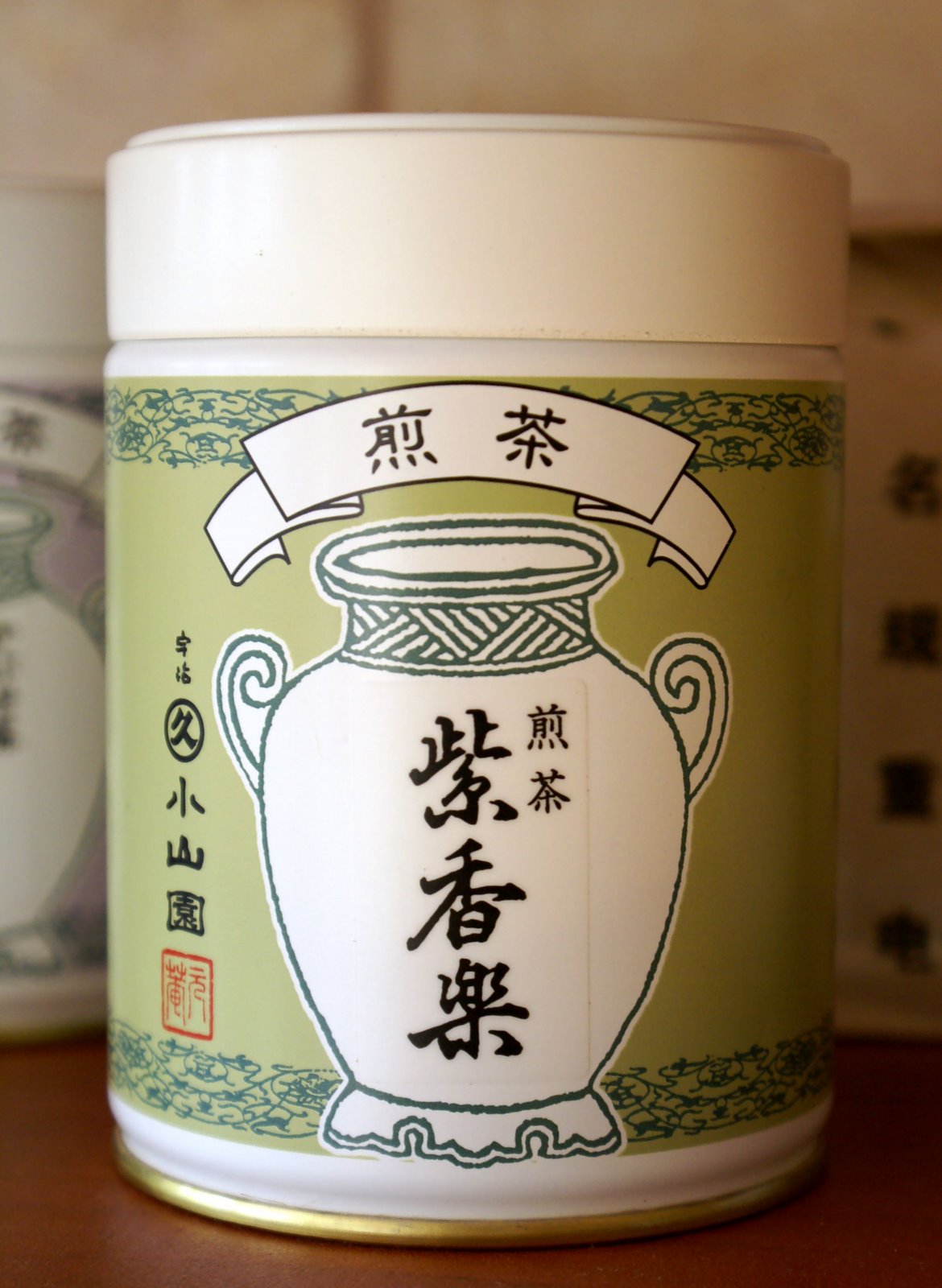 This 2009 Shigaraki Shincha is the second-cheapest from
This 2009 Shigaraki Shincha is the second-cheapest from 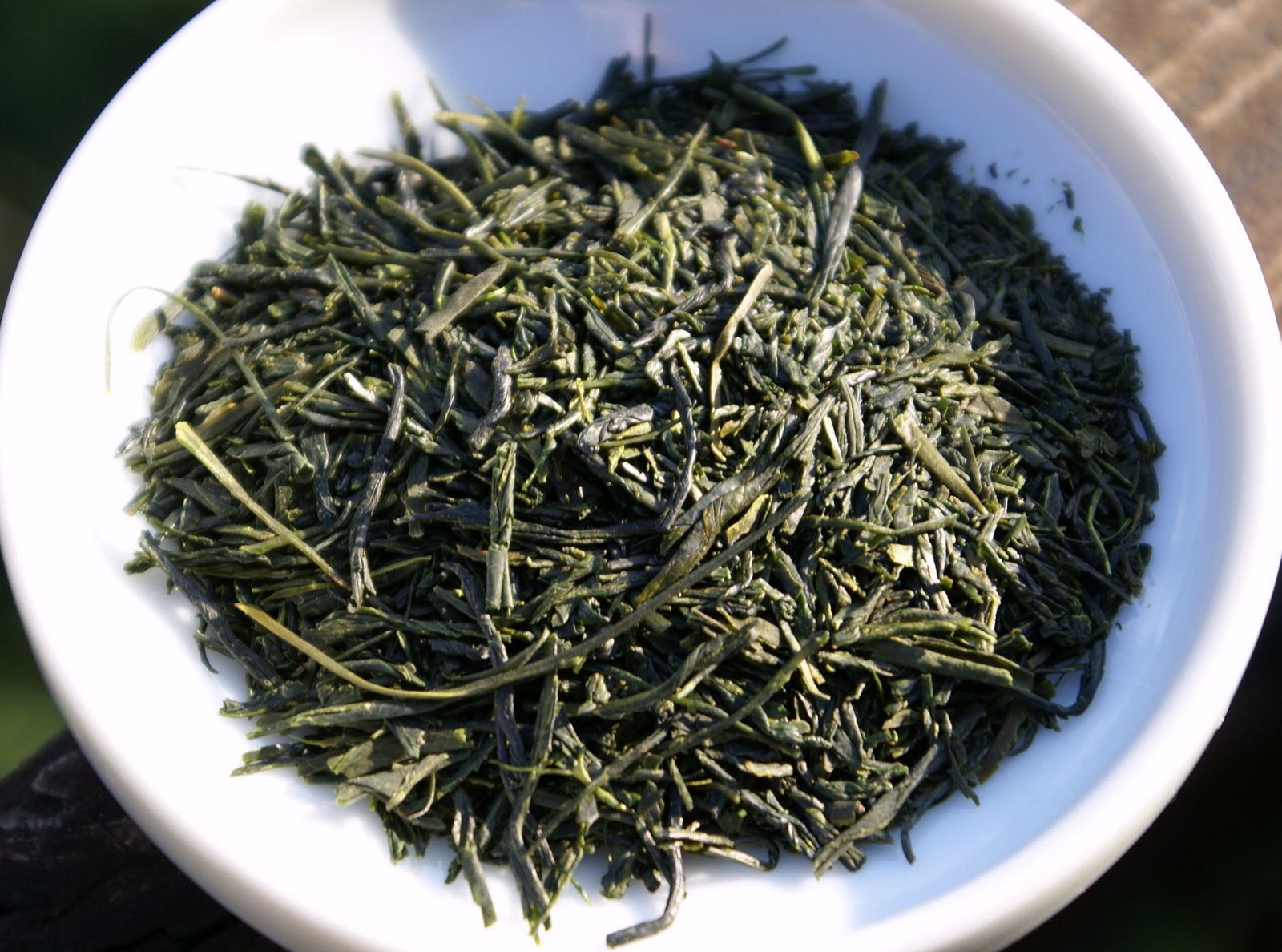
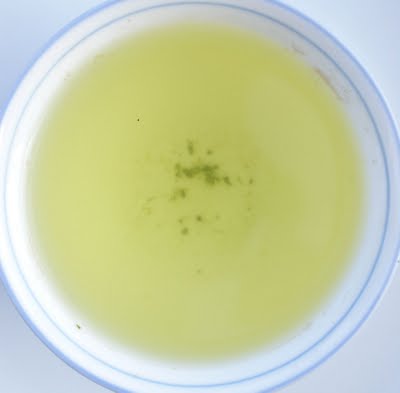
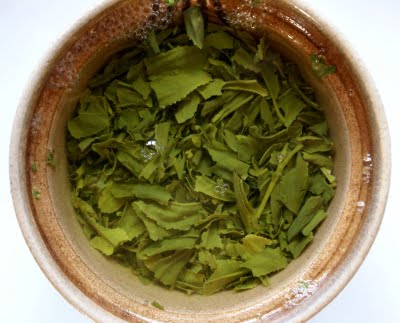 Shincha [first spring harvest of sencha] is often defined as bold and powerful, and tea vendors routinely warn you against overbrewing it. As with sencha, there’s a wide variety of styles and it all really depends on the region, tea cultivar, grade, processing technique etc. This tea is everything but ‘bold’, which is fine with me. For the price, it’s utterly good, and I highly recommend it.
Shincha [first spring harvest of sencha] is often defined as bold and powerful, and tea vendors routinely warn you against overbrewing it. As with sencha, there’s a wide variety of styles and it all really depends on the region, tea cultivar, grade, processing technique etc. This tea is everything but ‘bold’, which is fine with me. For the price, it’s utterly good, and I highly recommend it.